Garden of Salvation - Kenny Hill
Artist-built Environment | Concrete environment | Restored/preserved - Open to the public
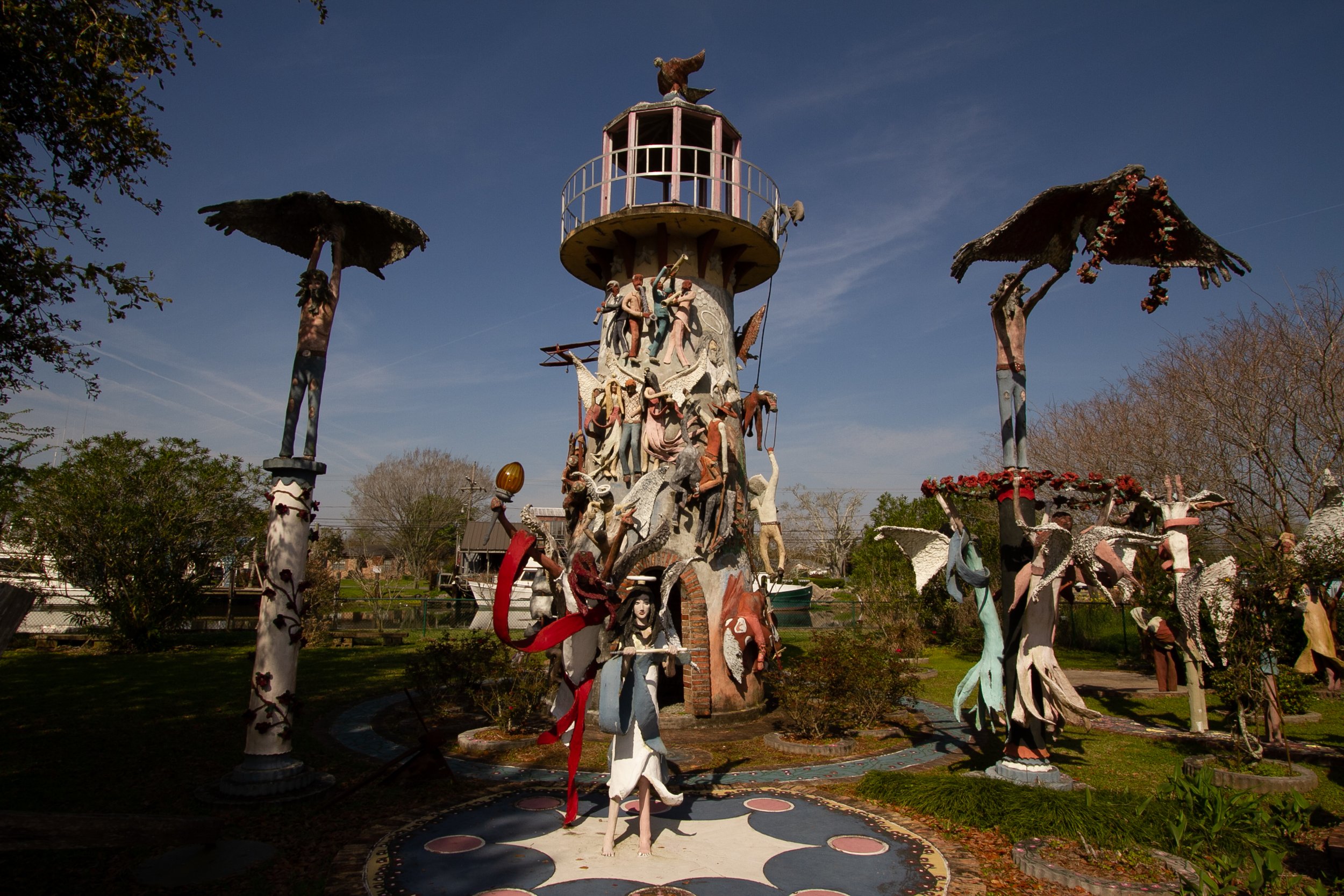

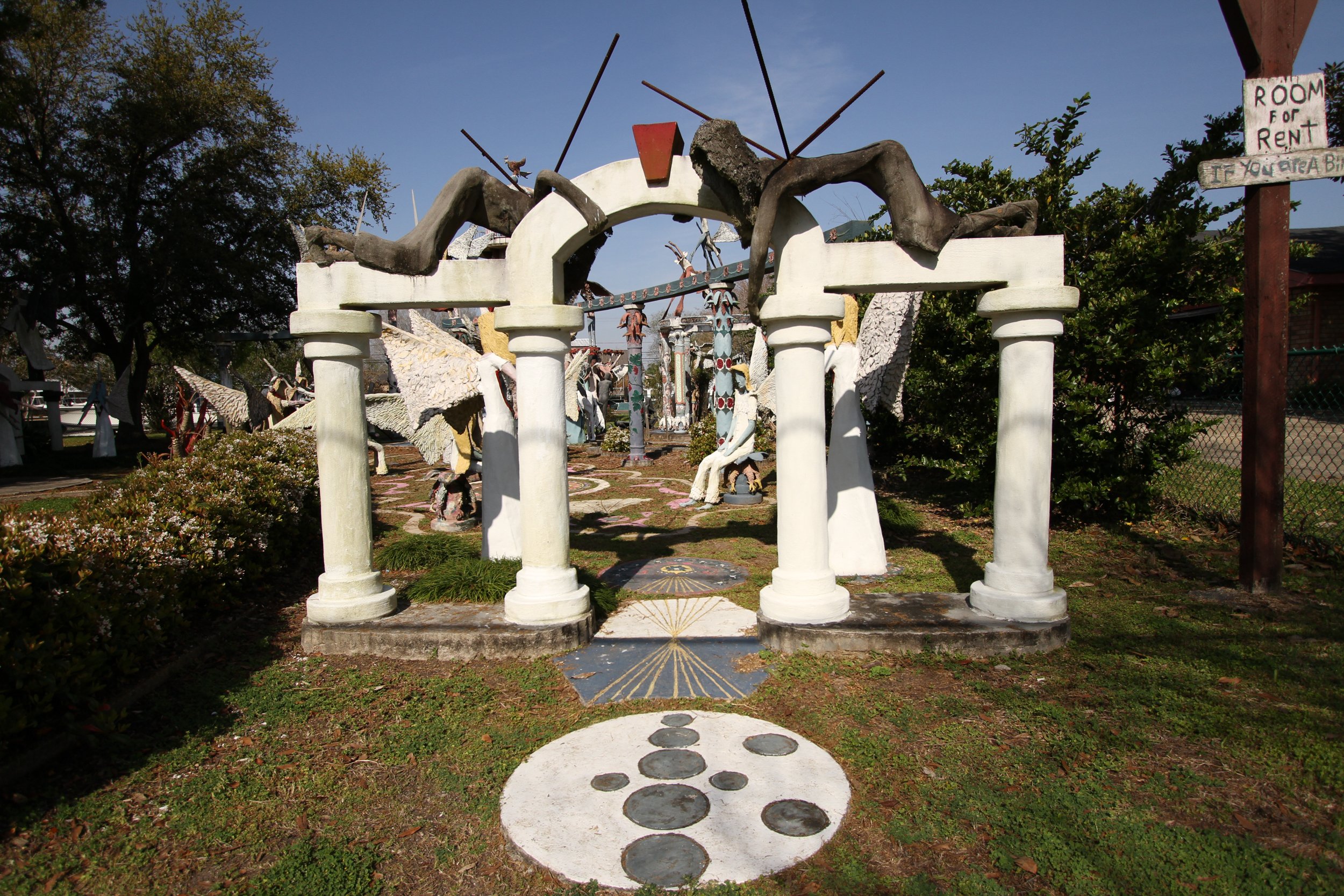
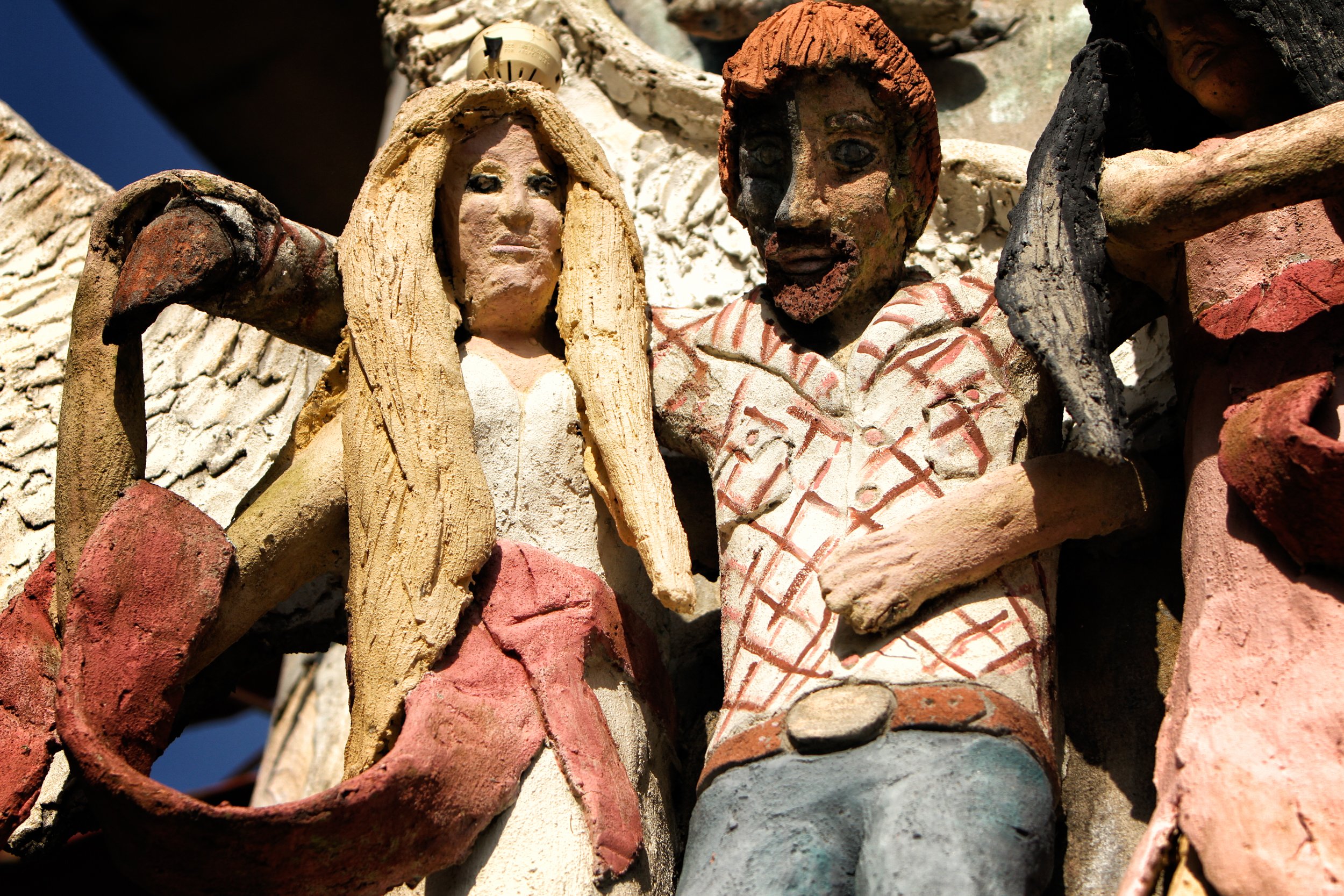
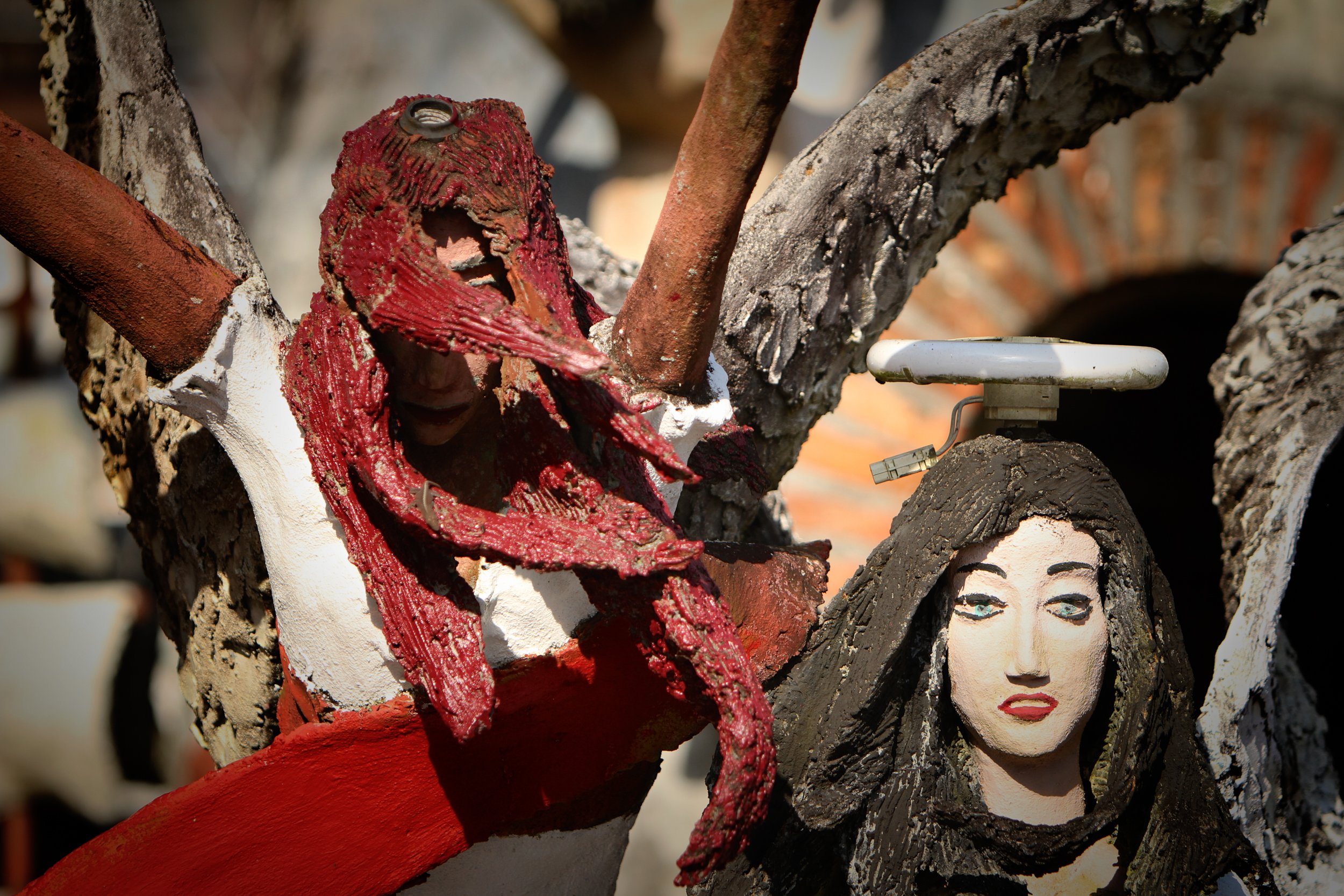
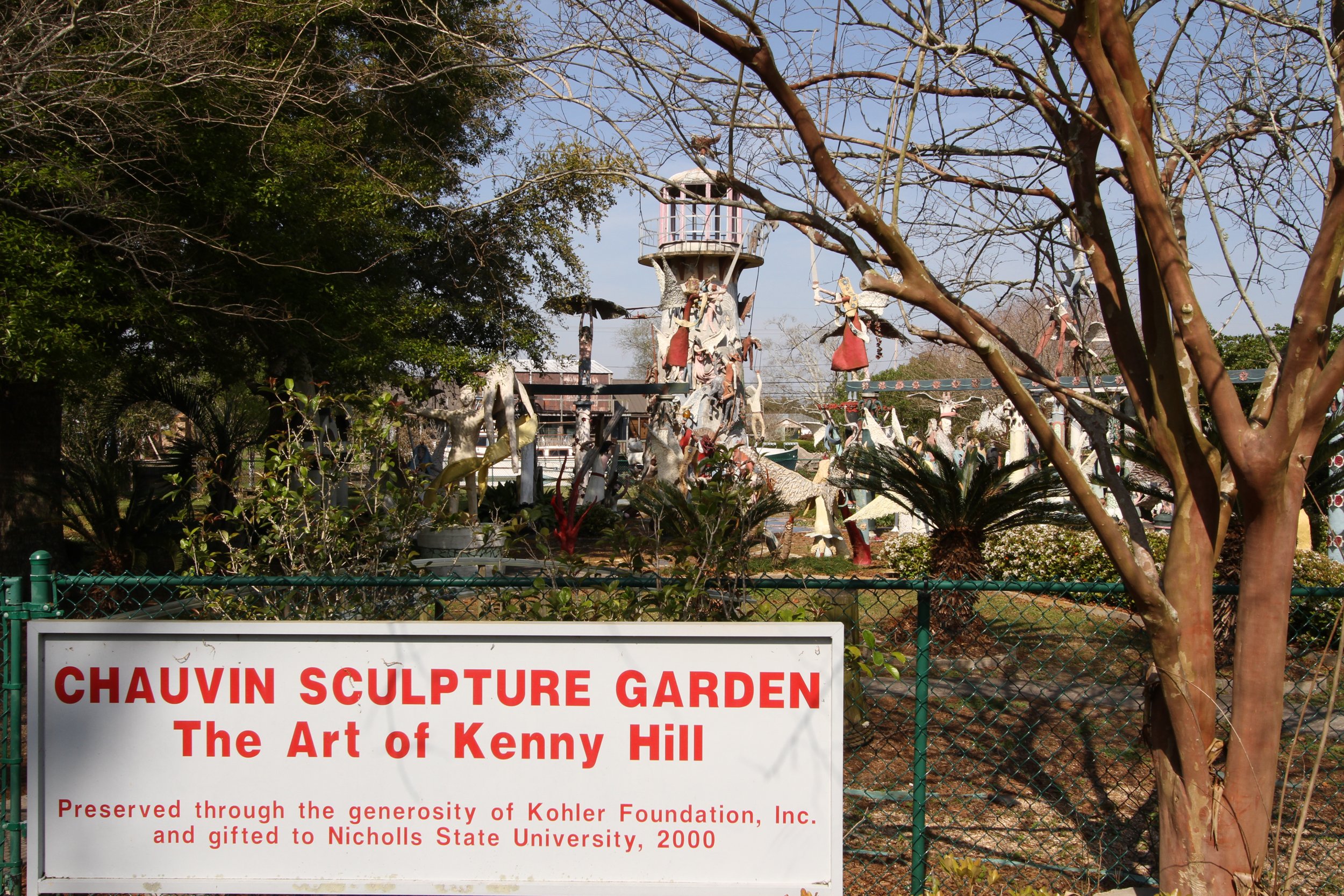

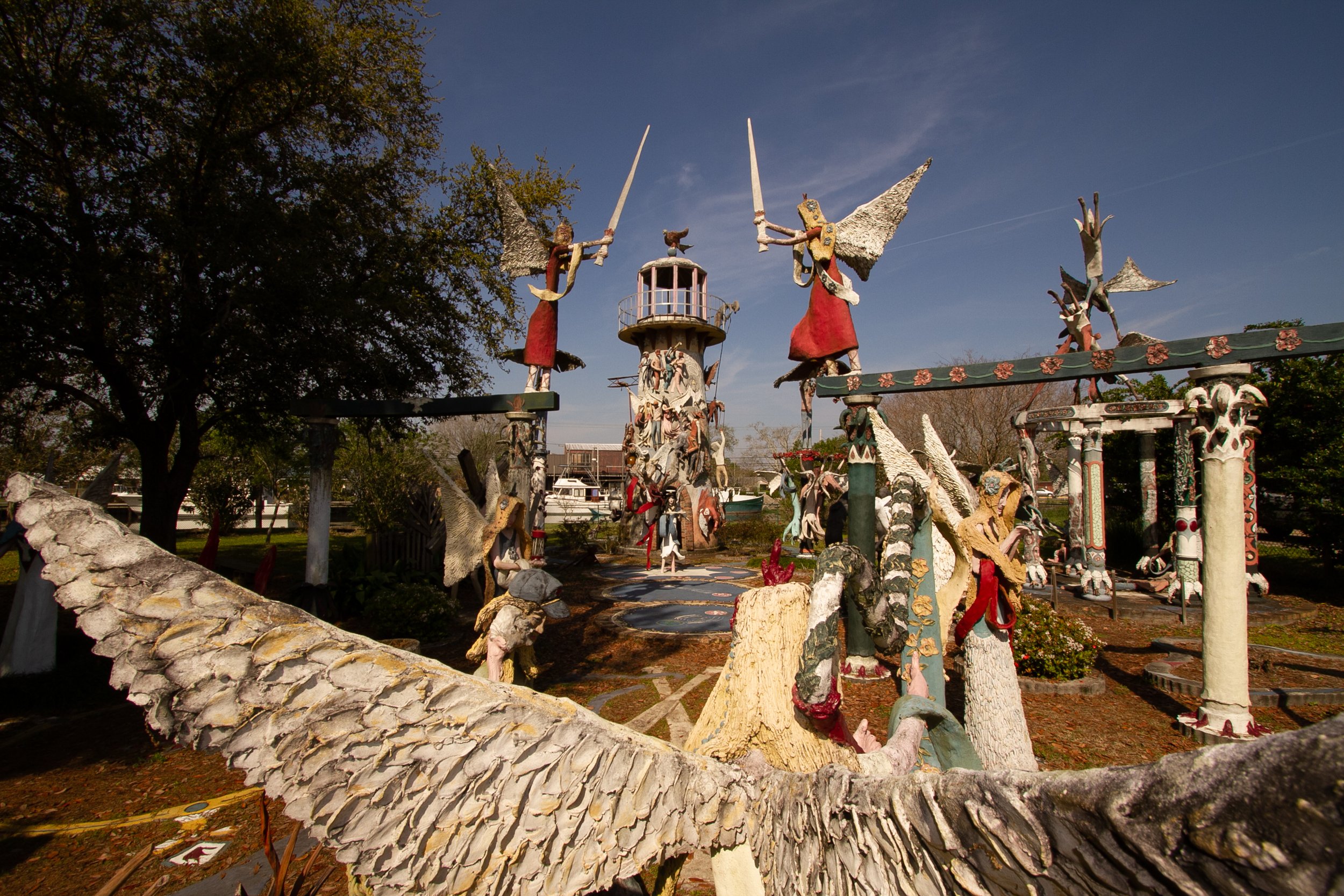
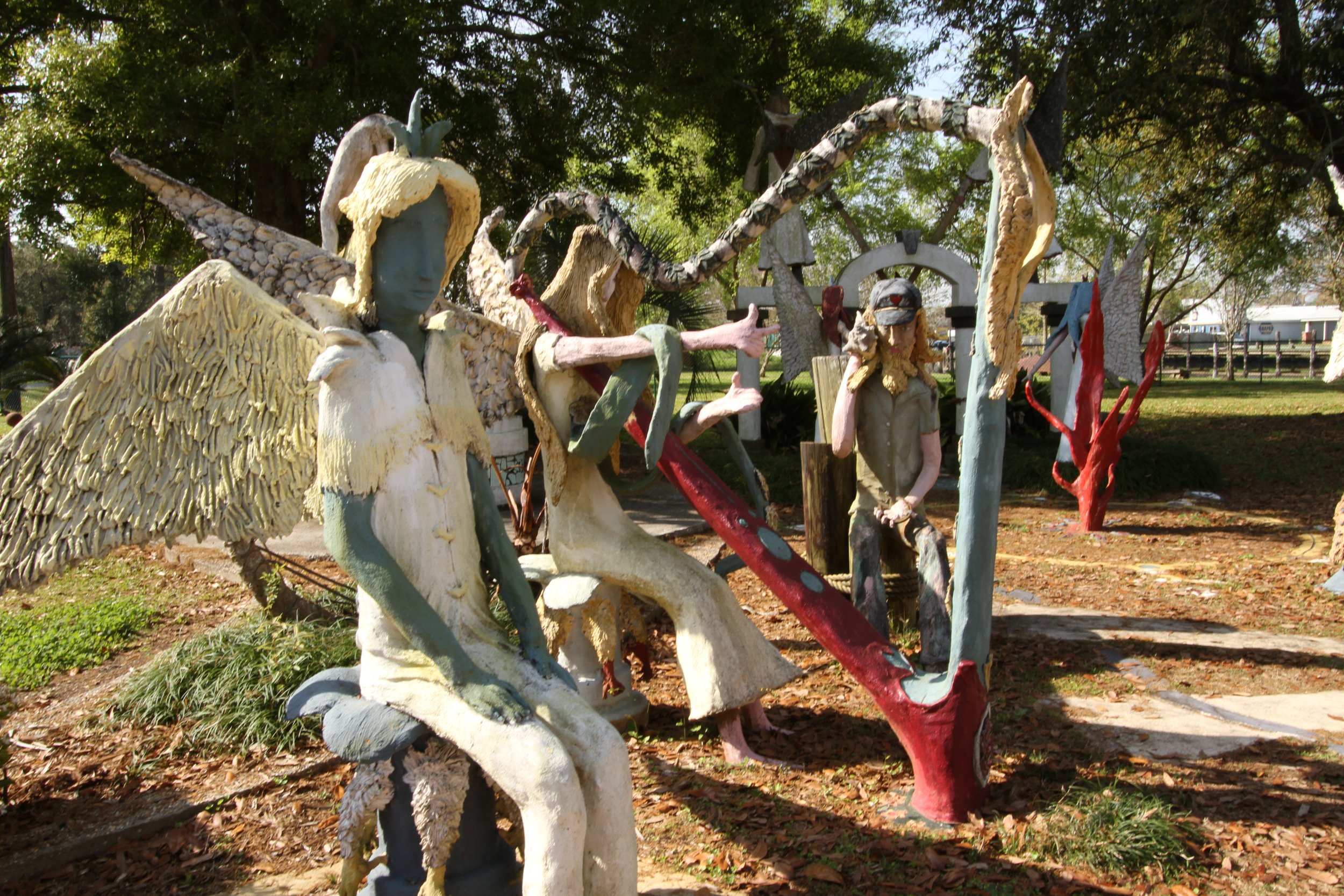
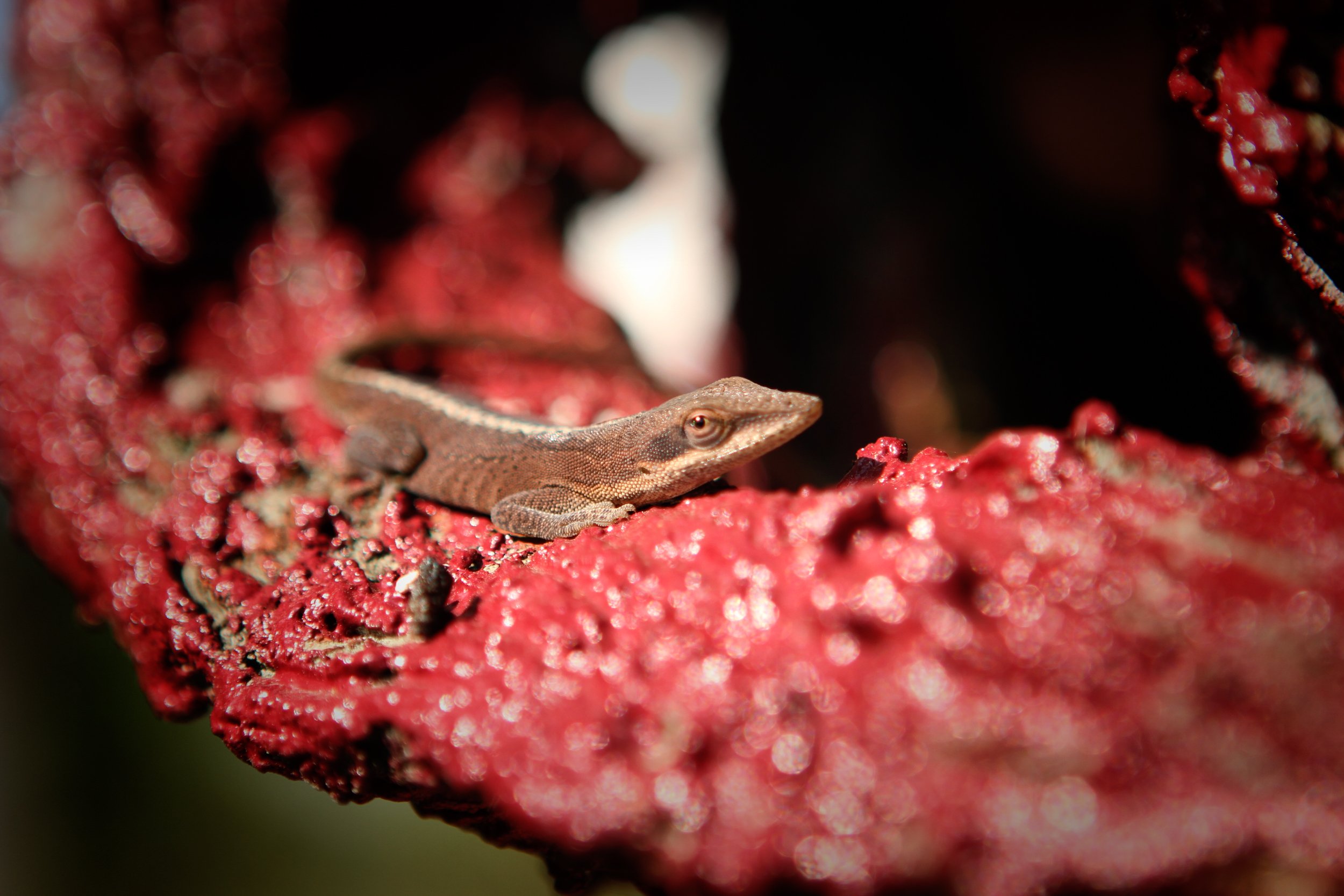
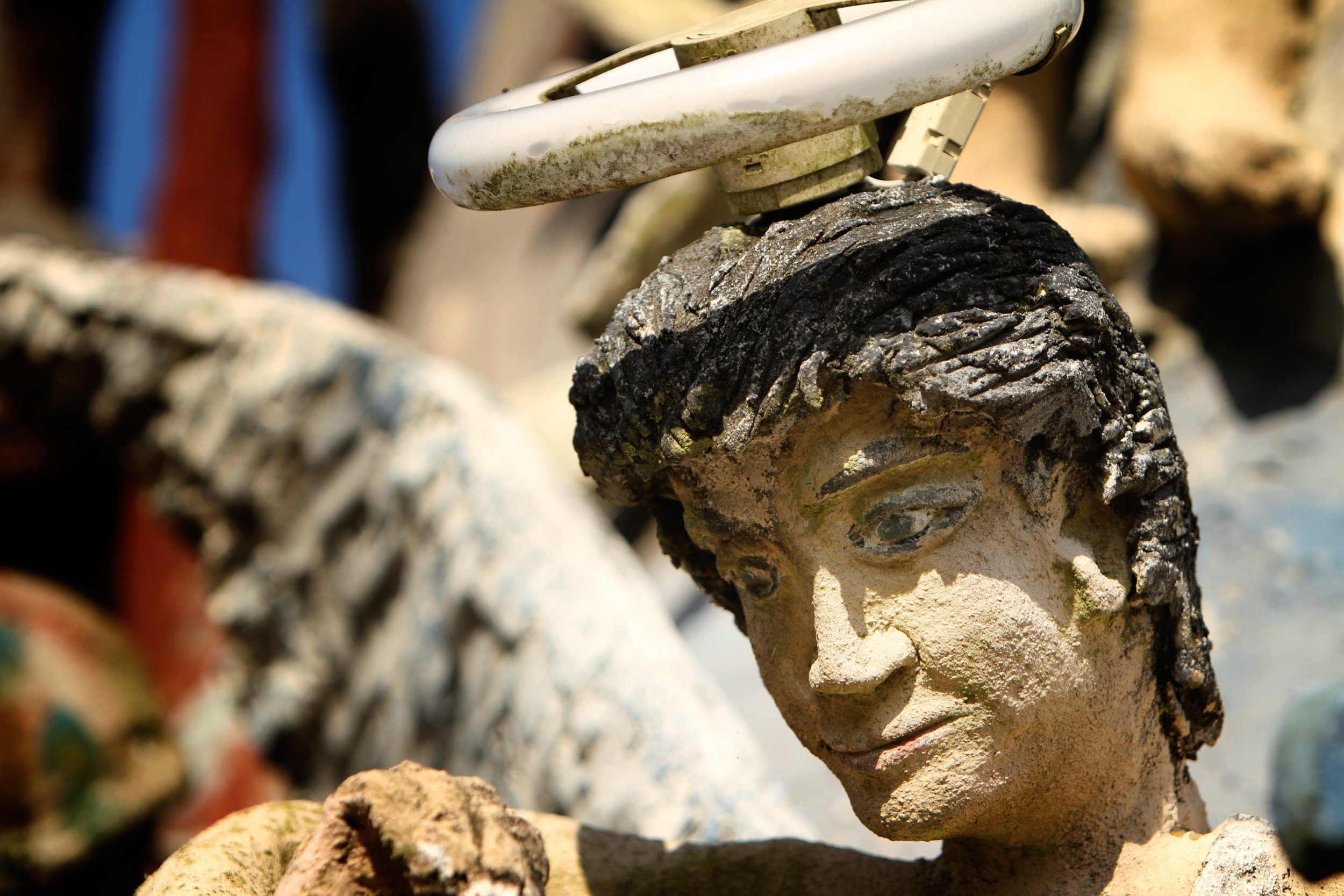
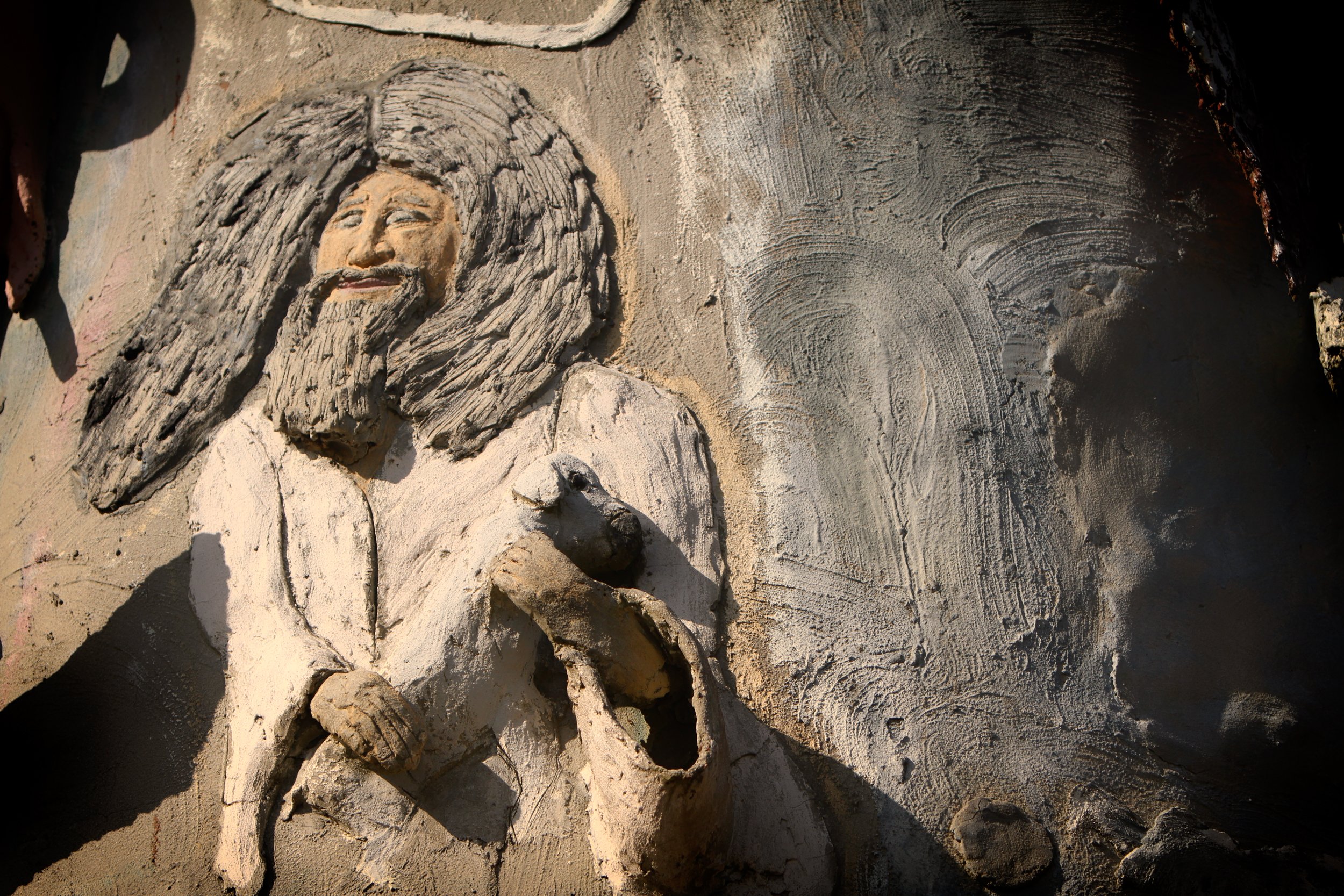
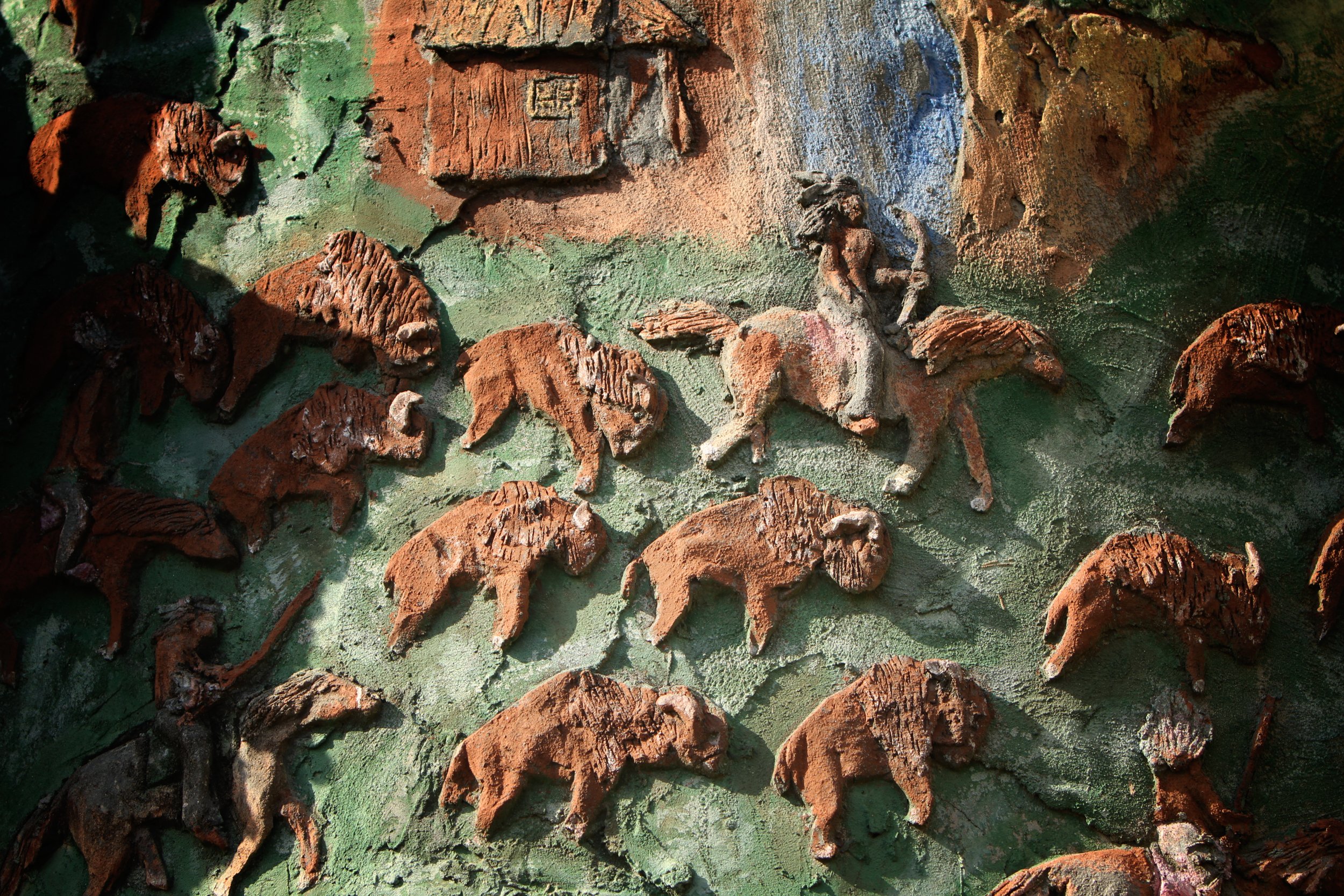
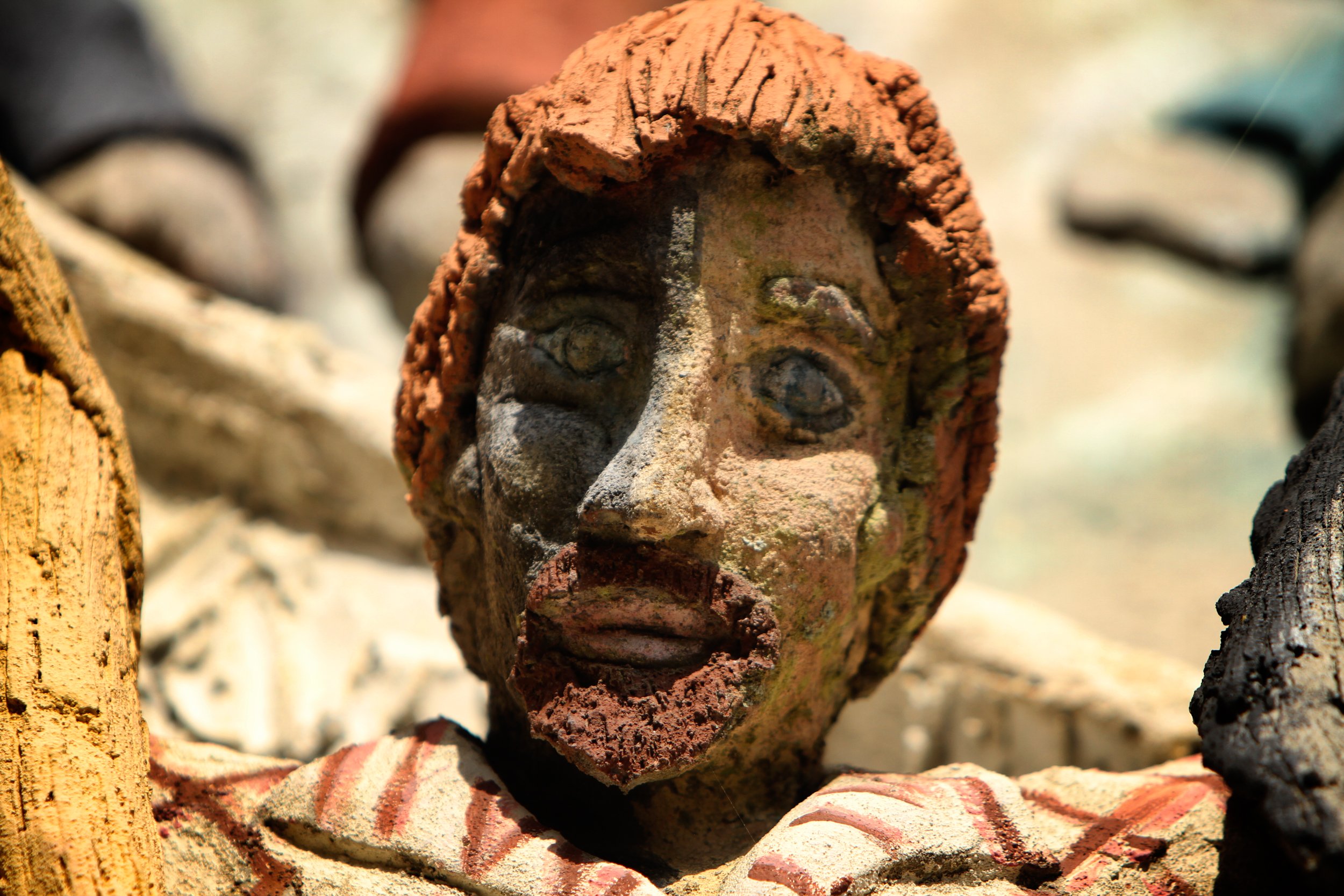
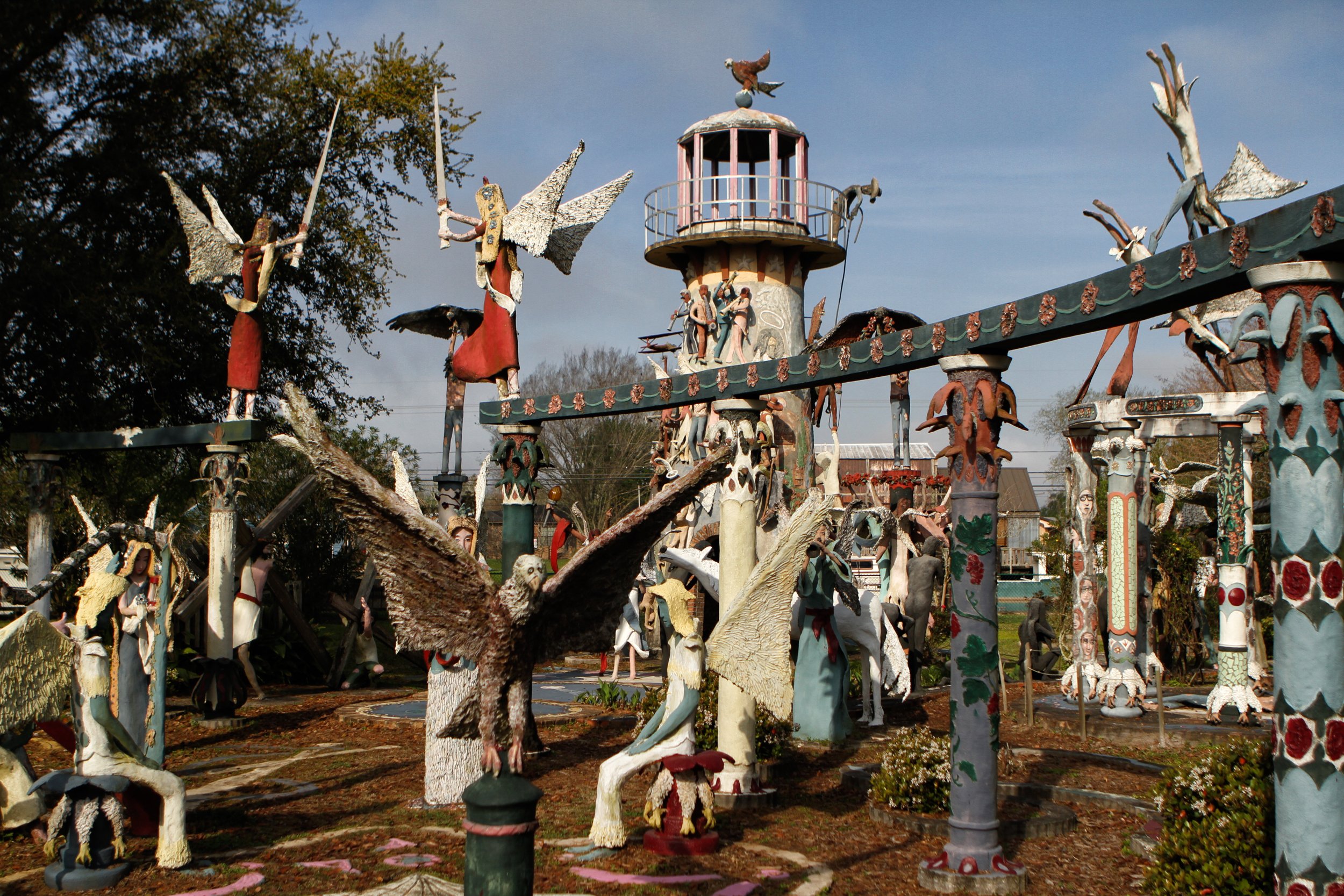
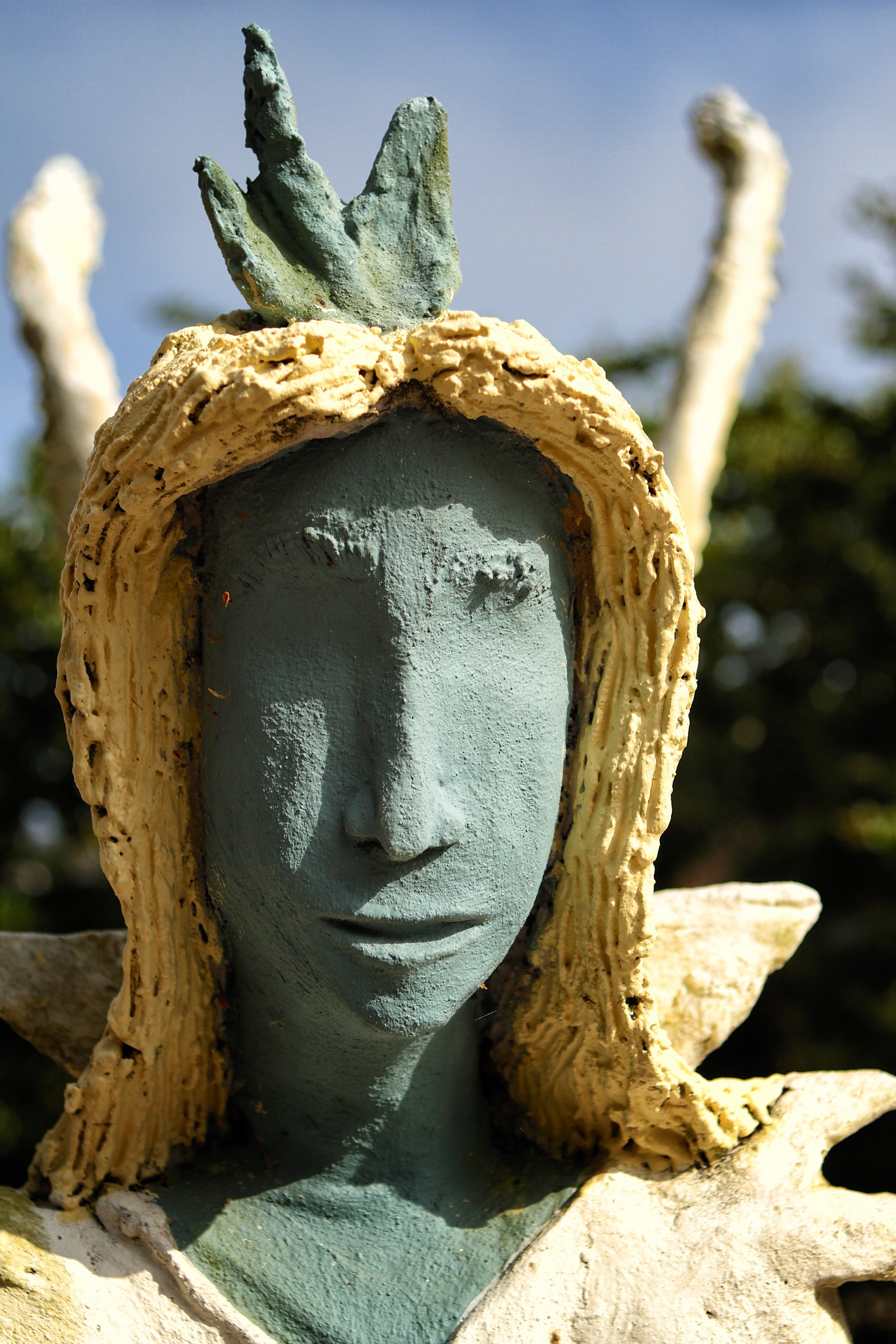
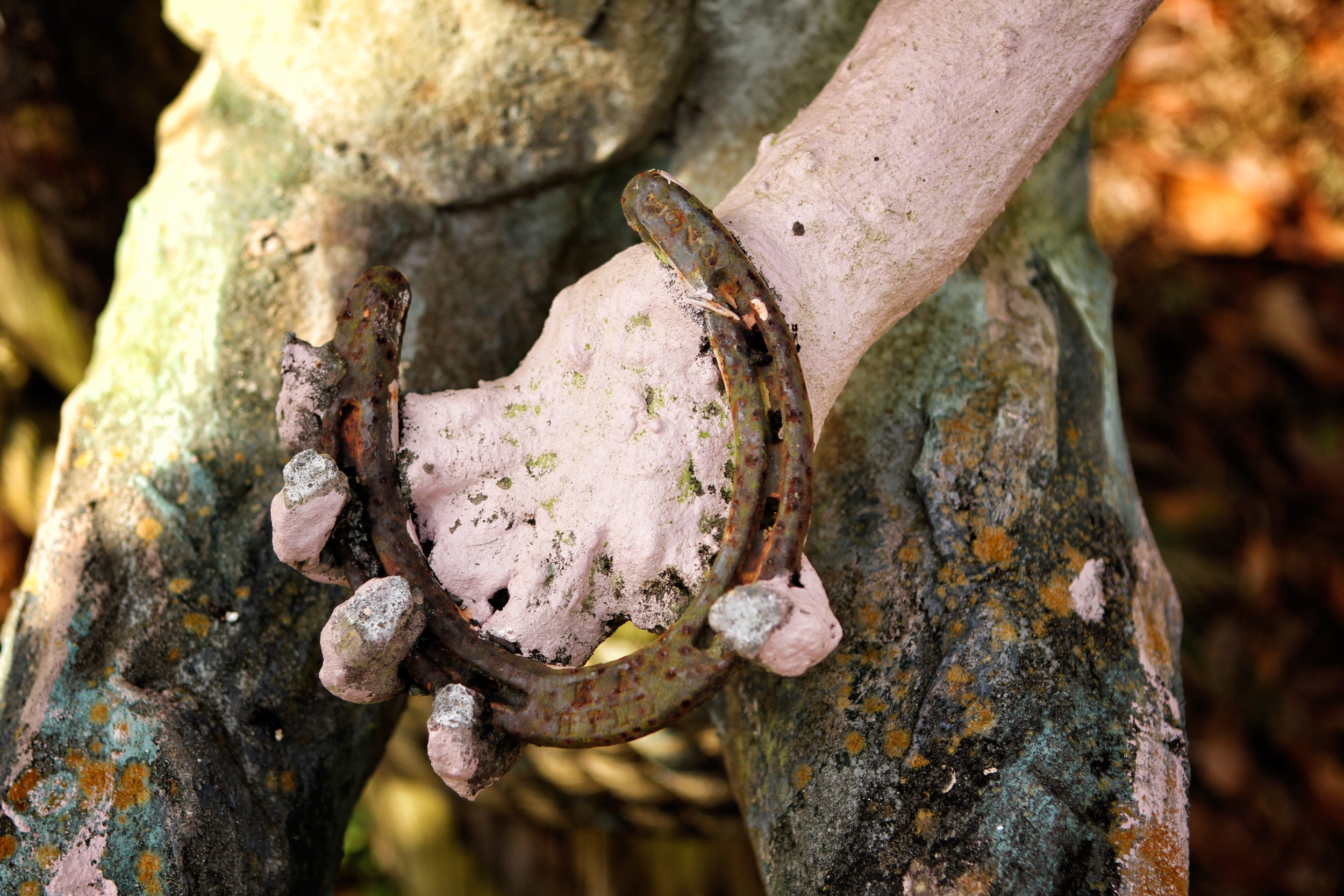
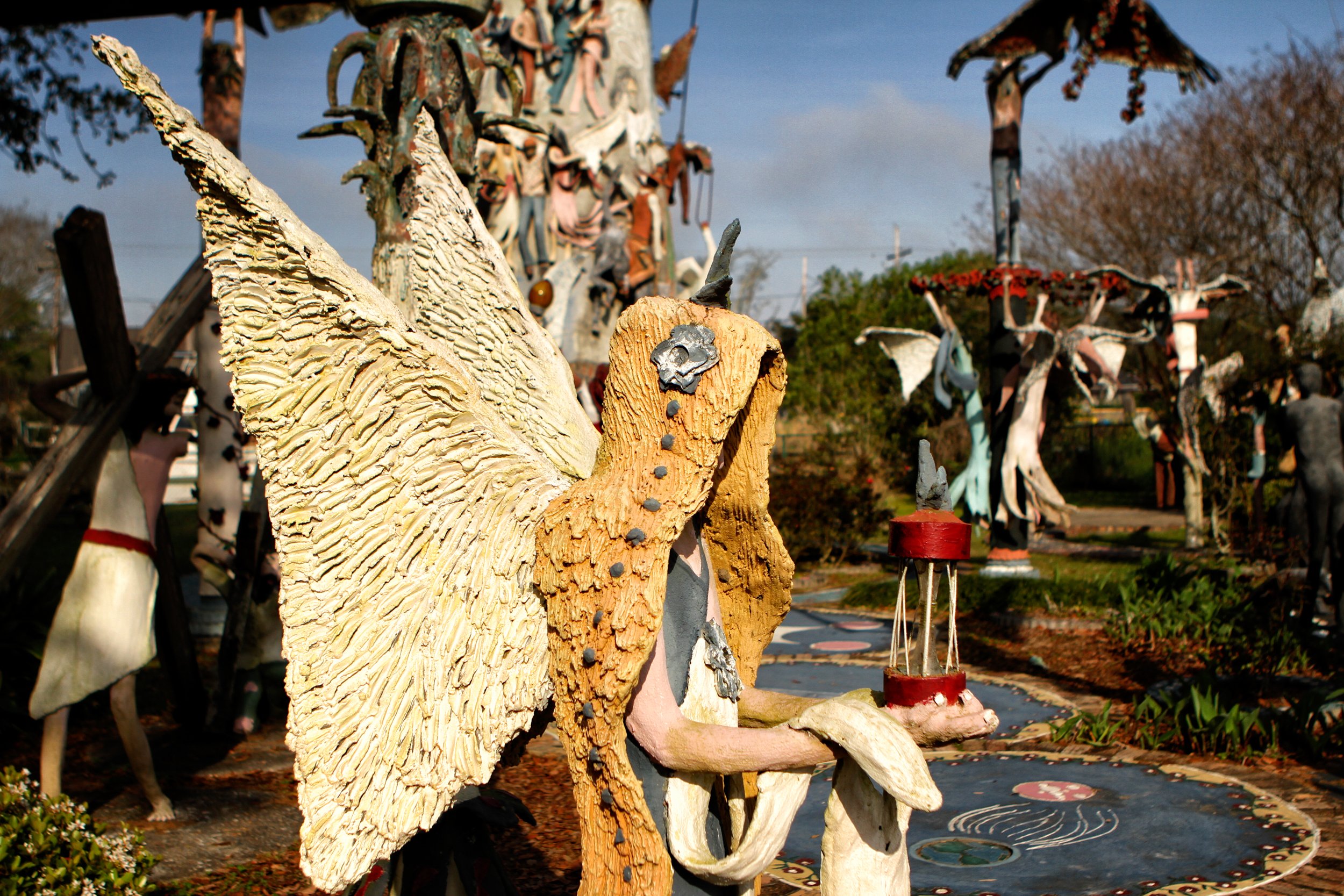
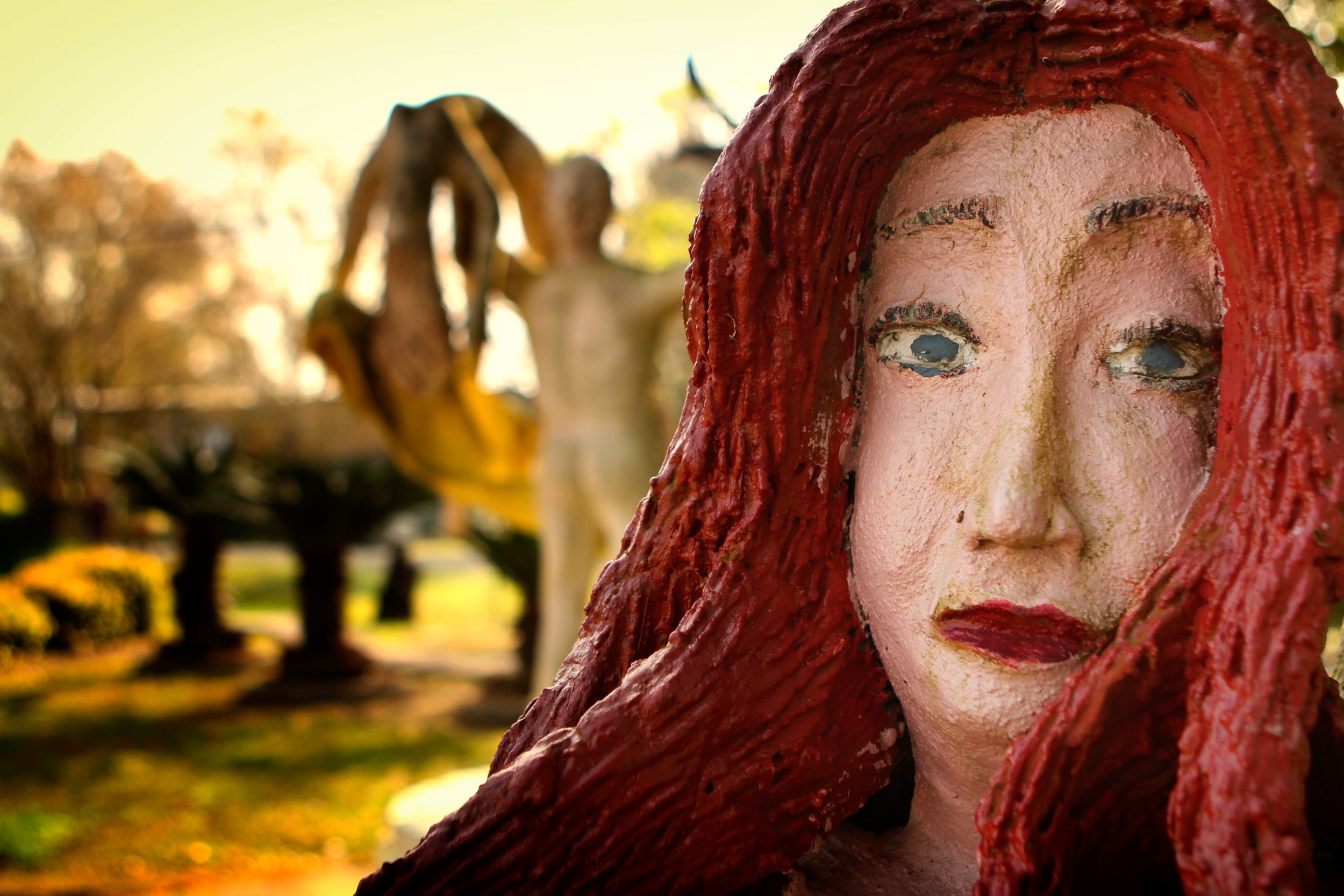
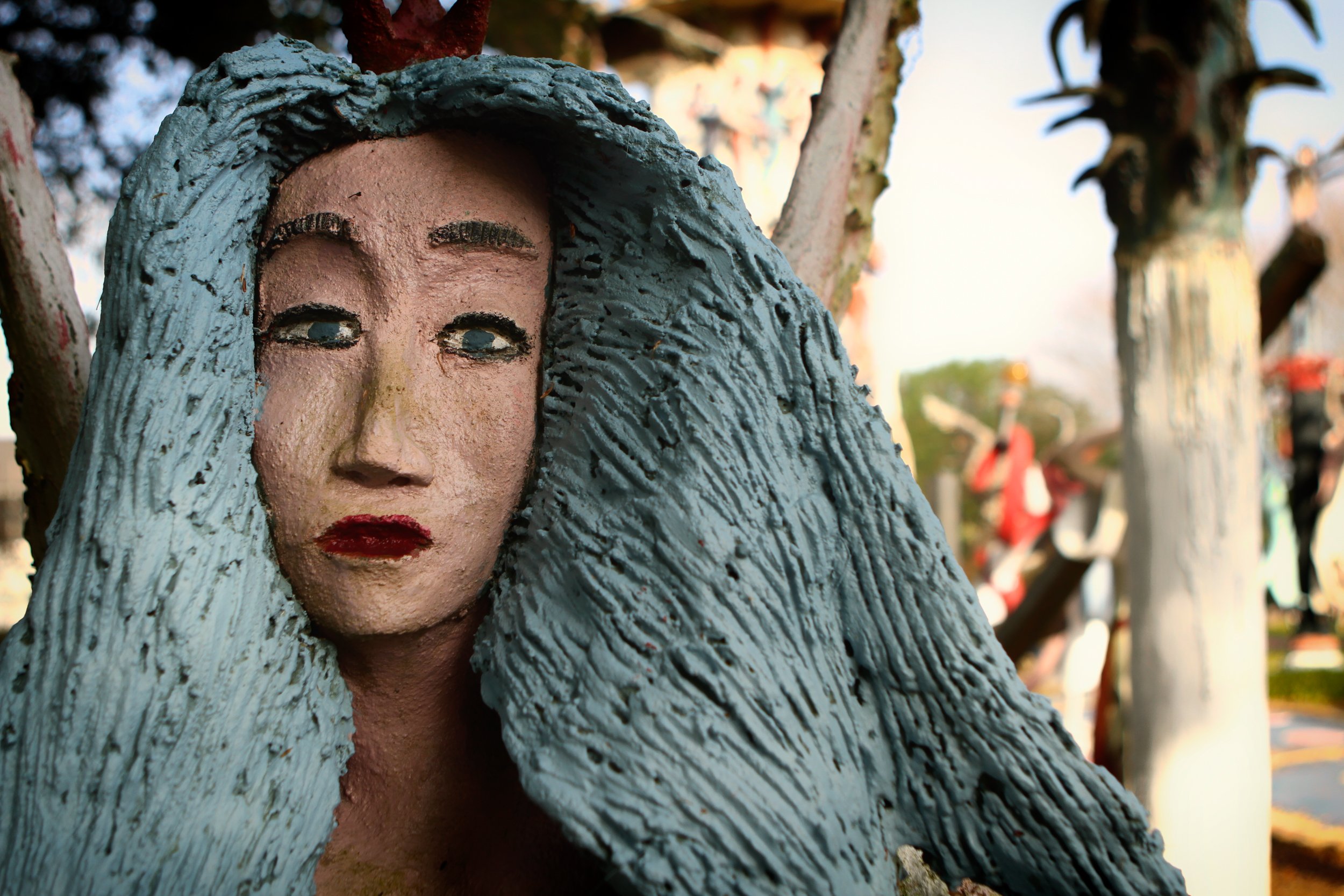
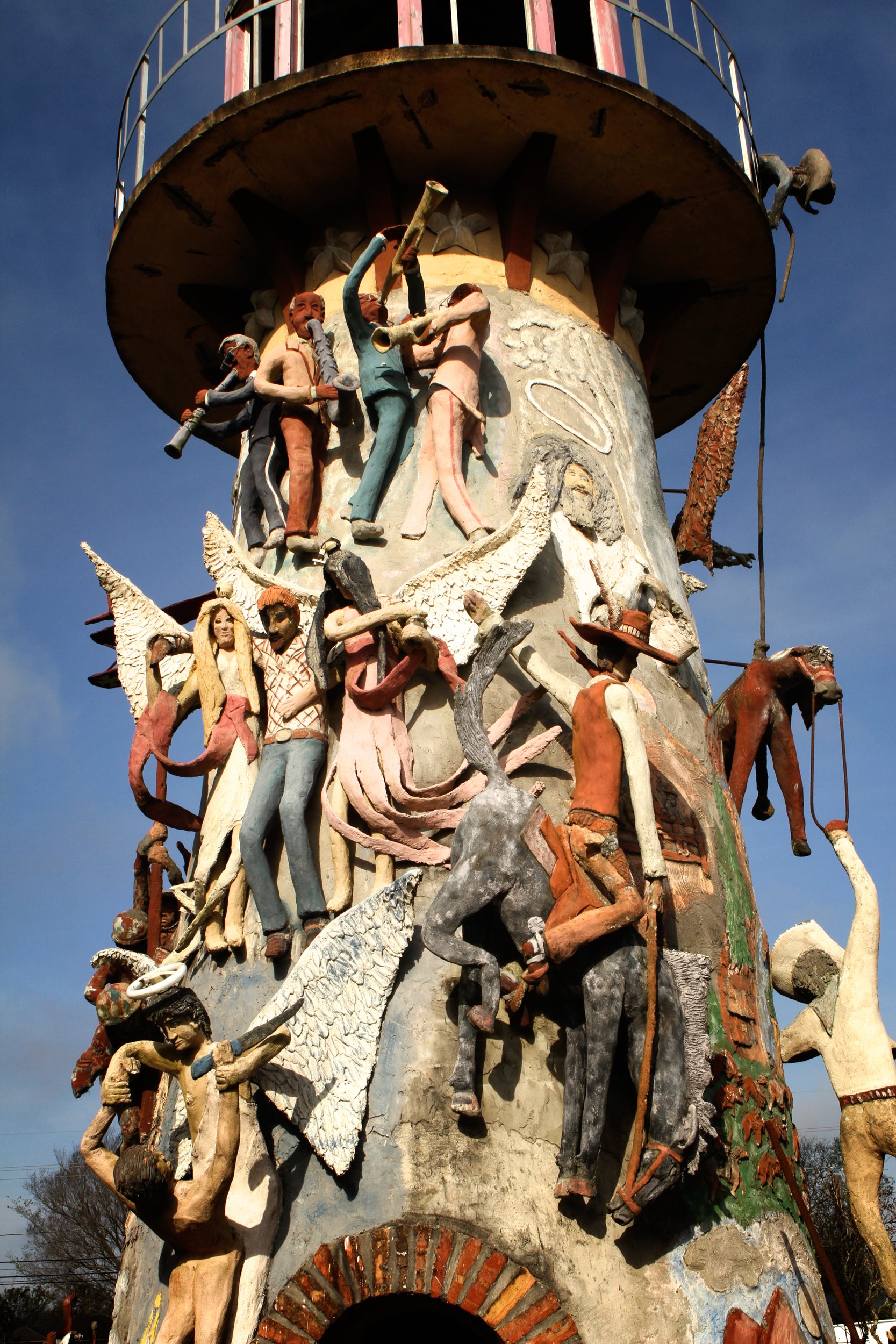
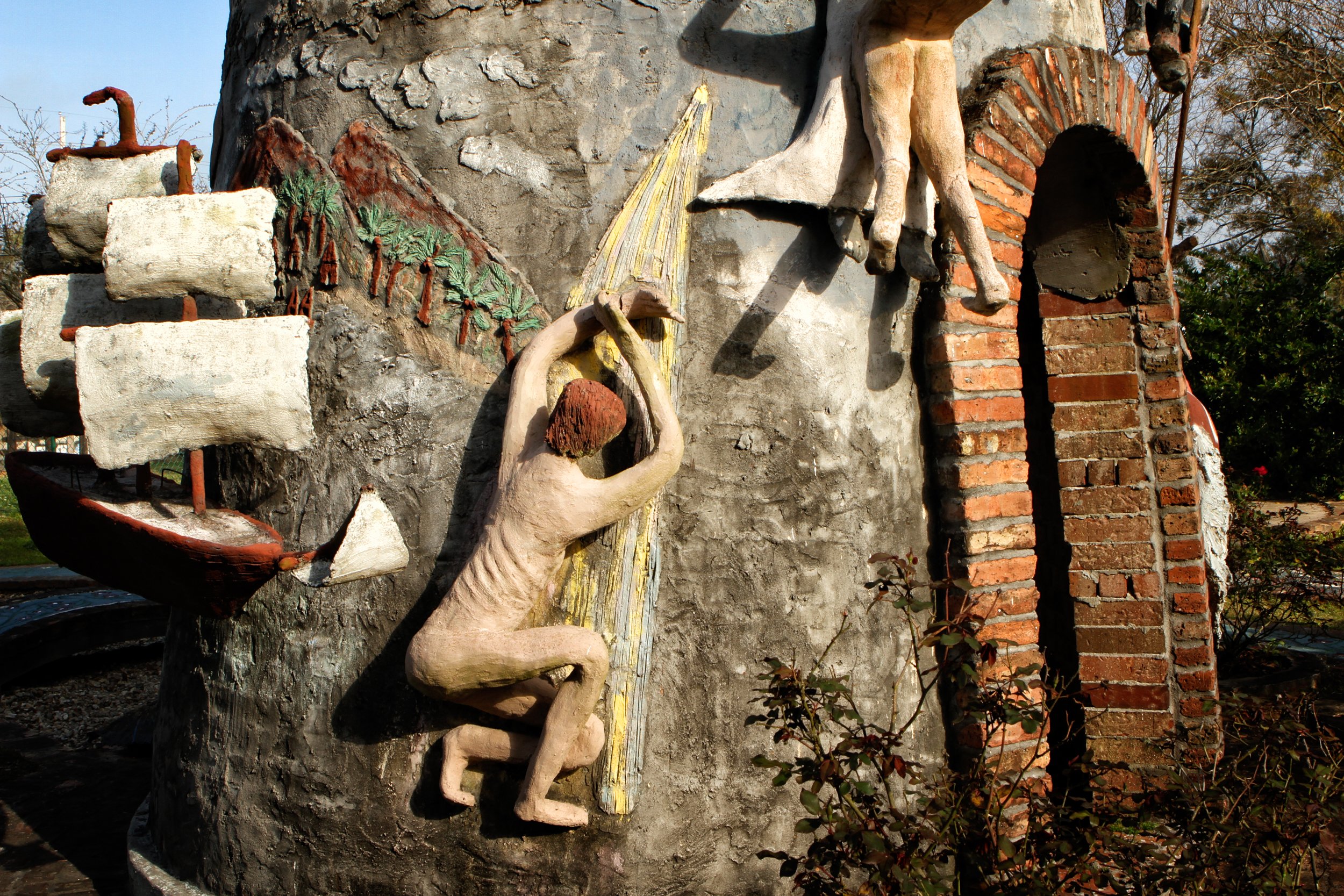
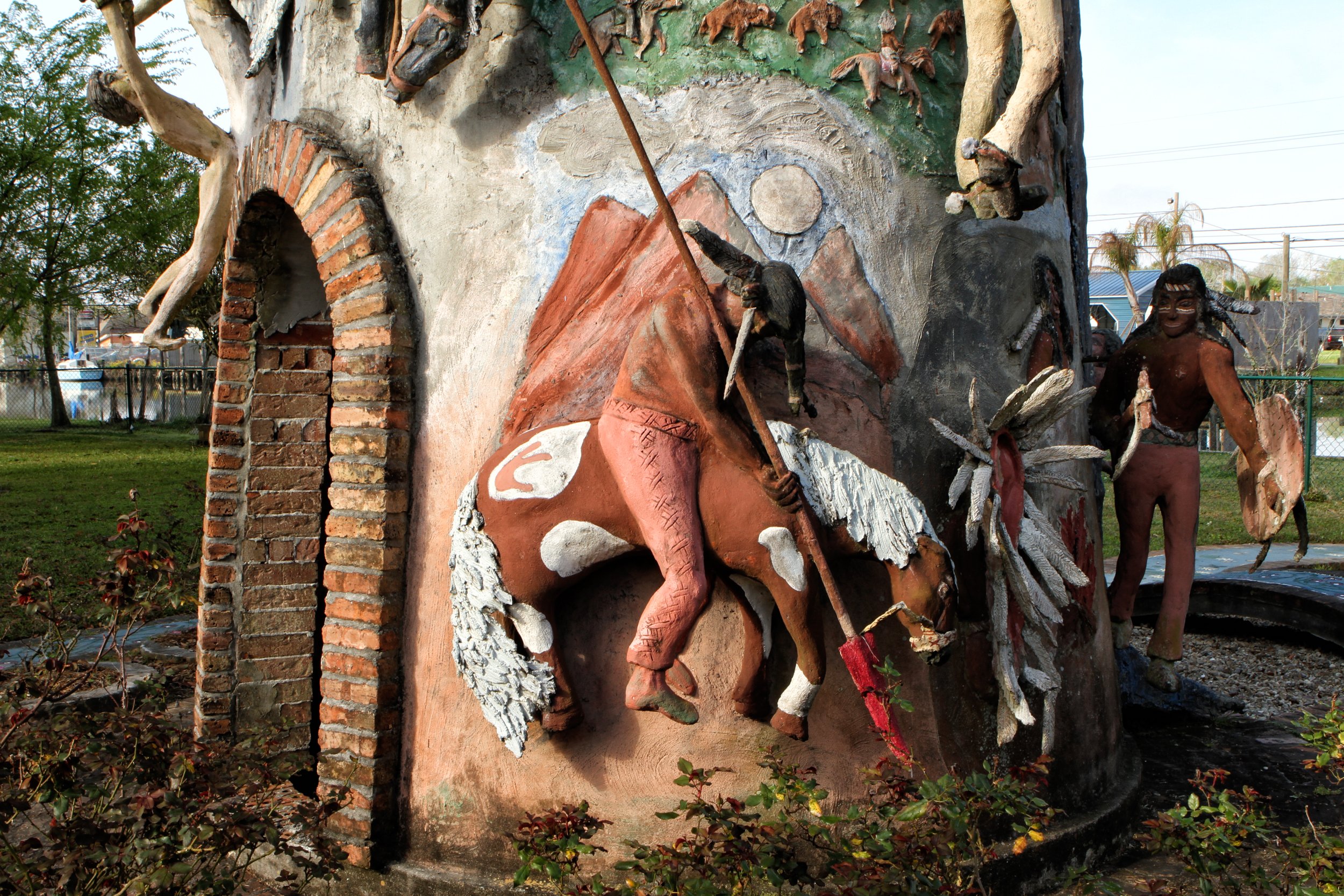
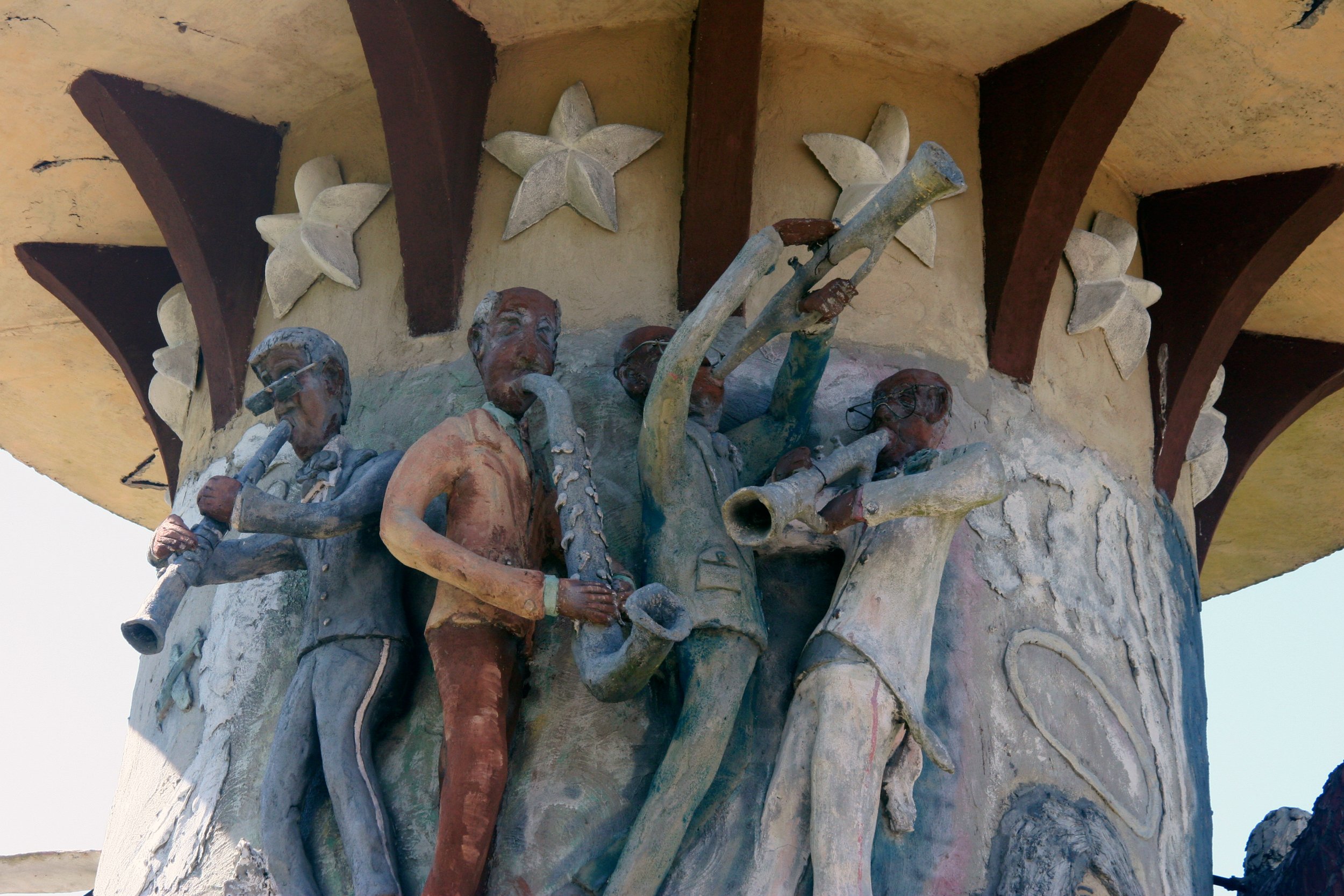
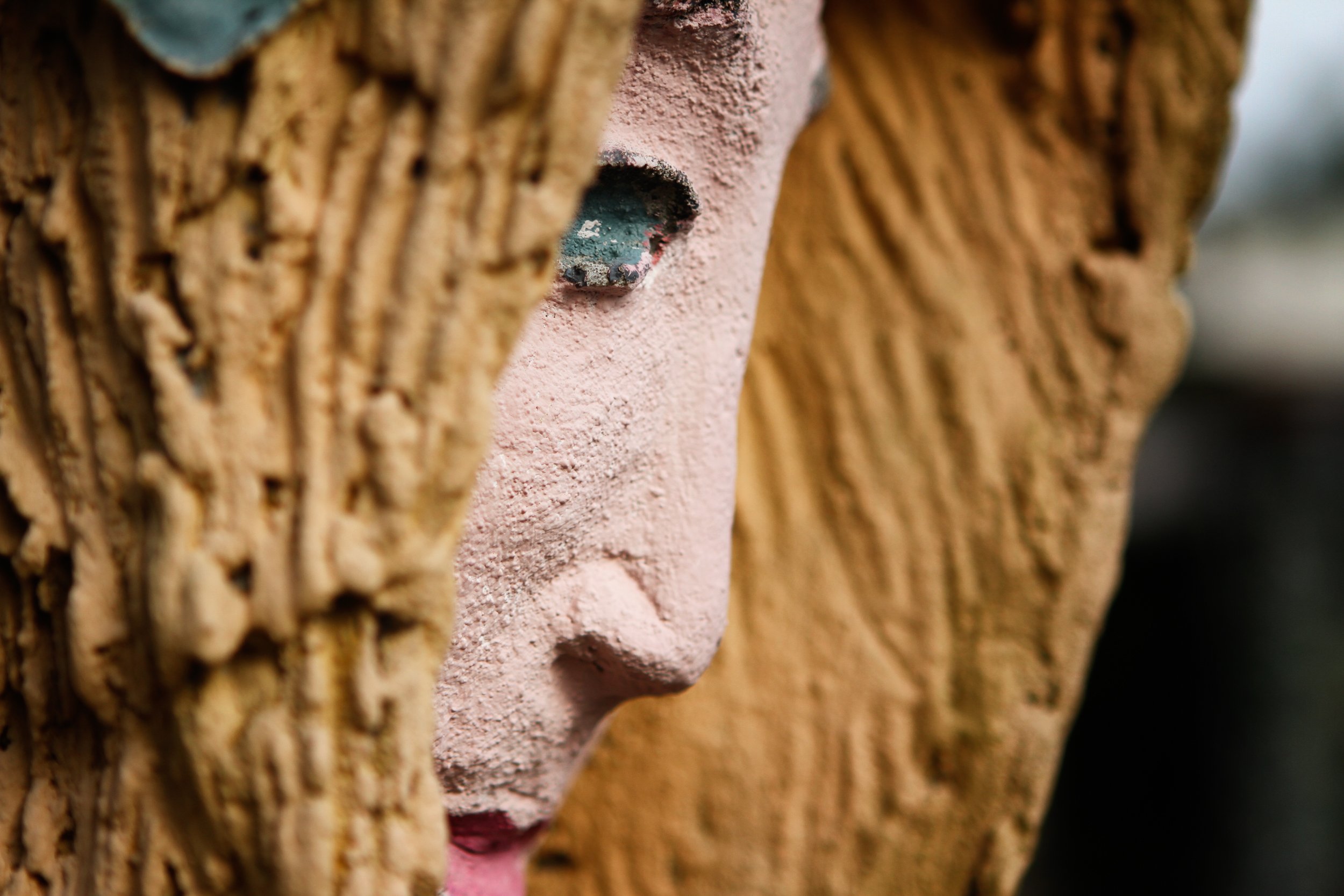
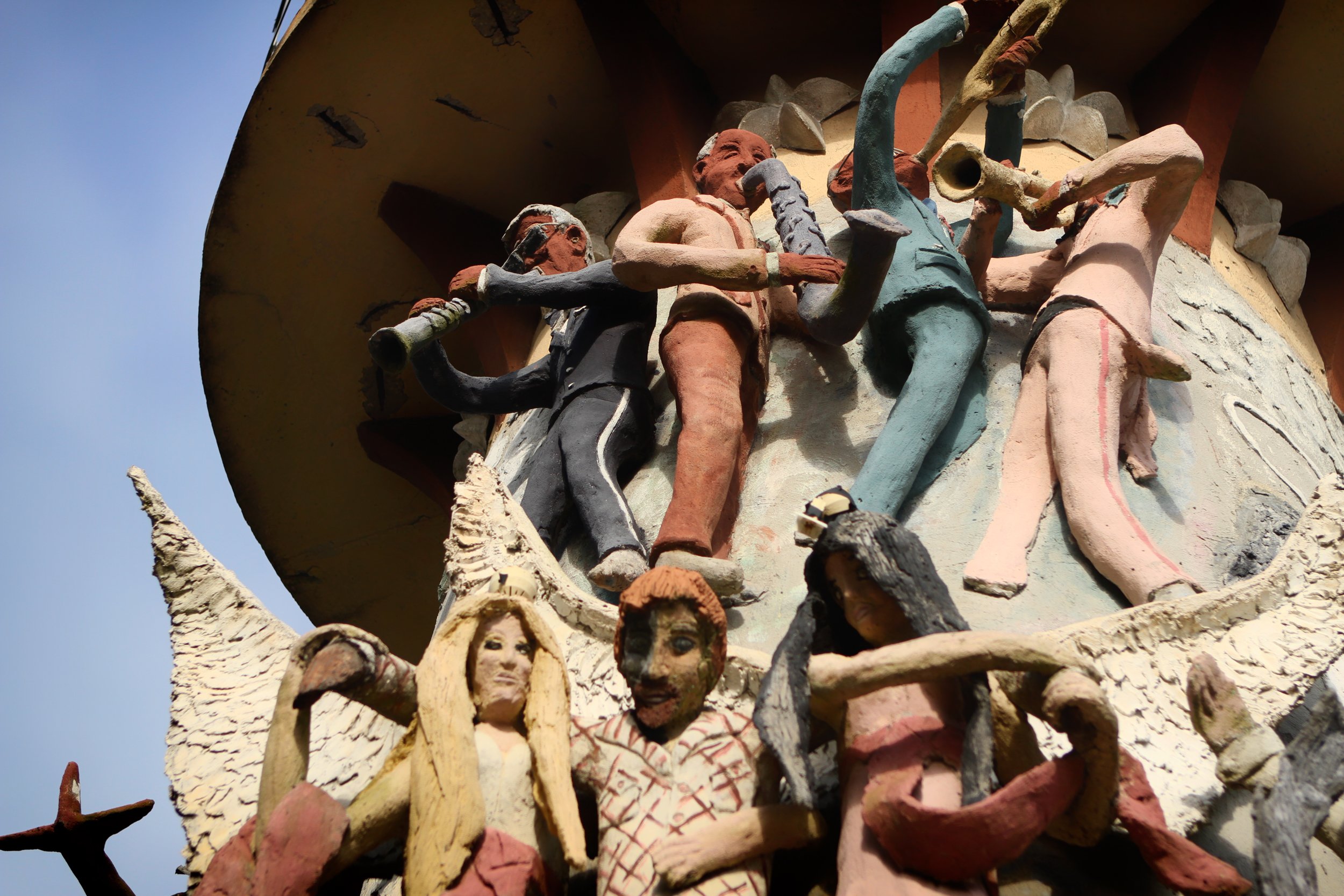
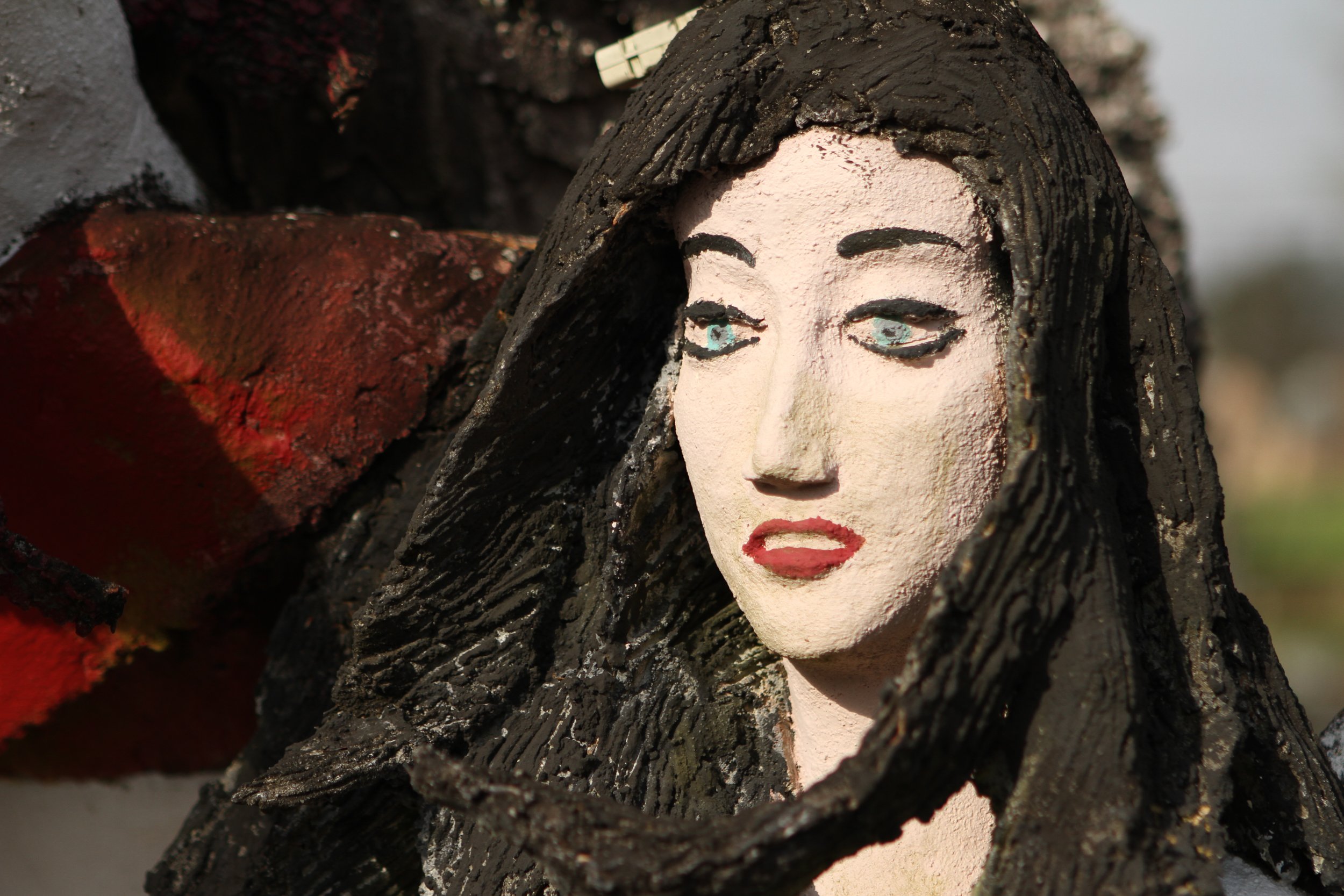
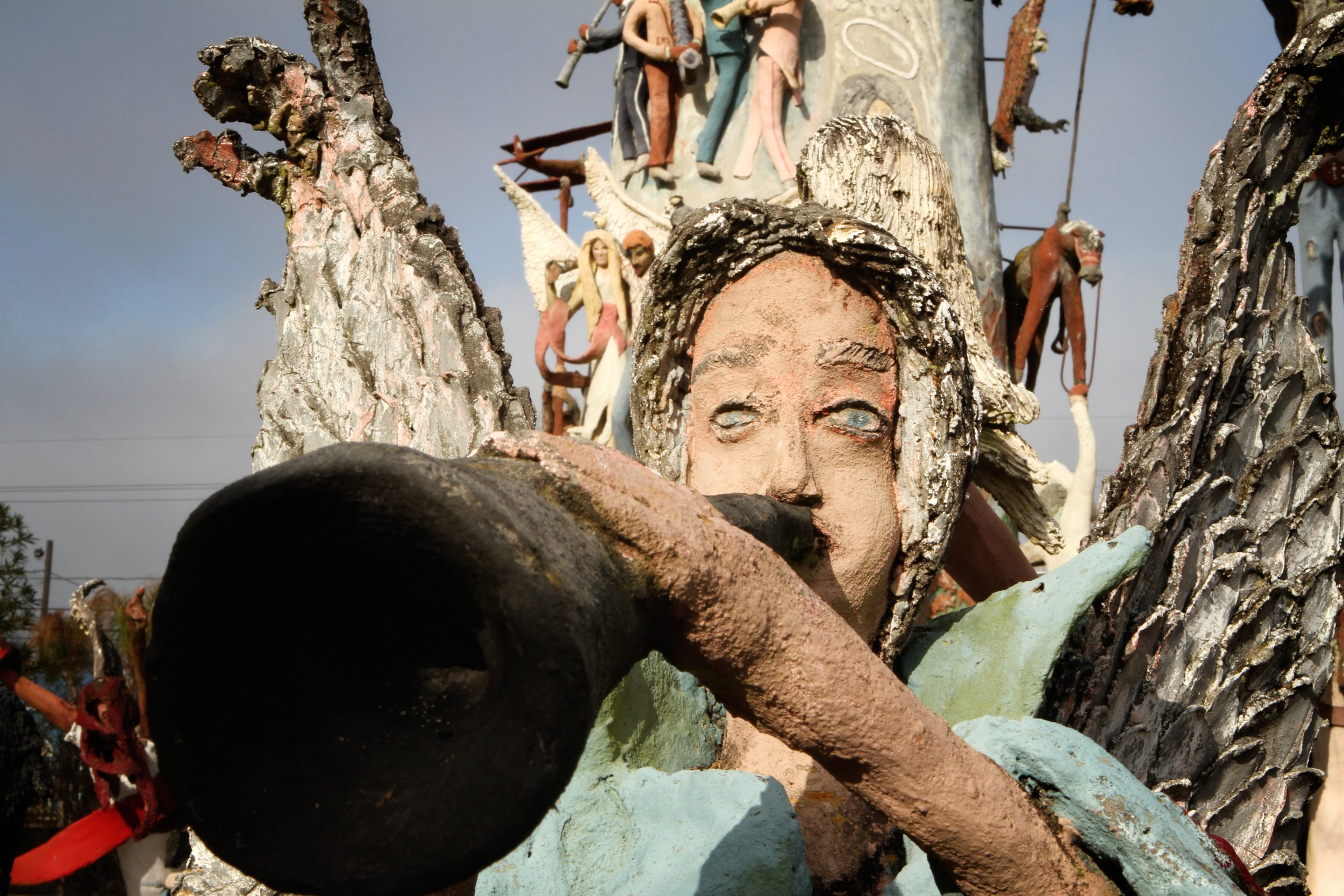
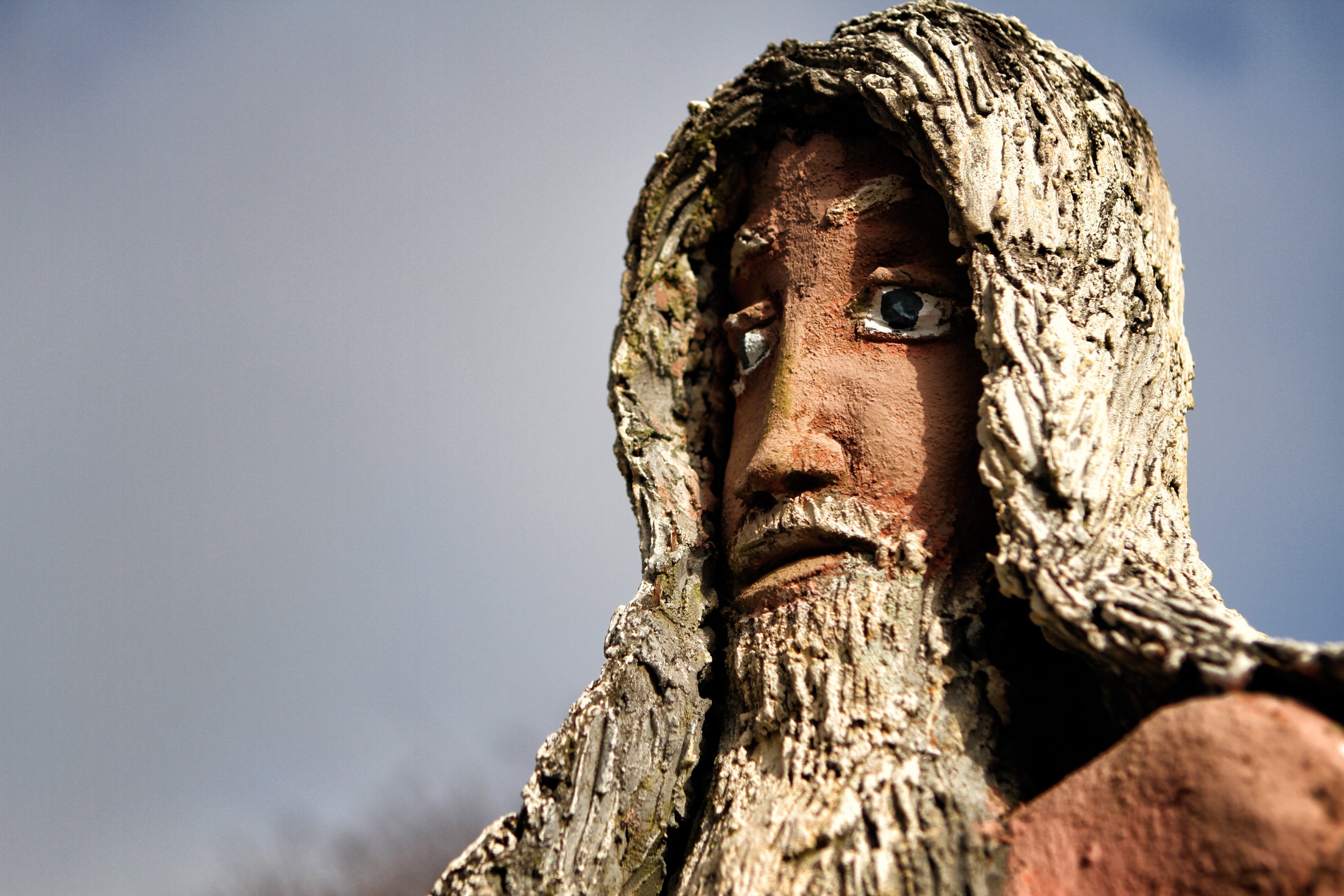

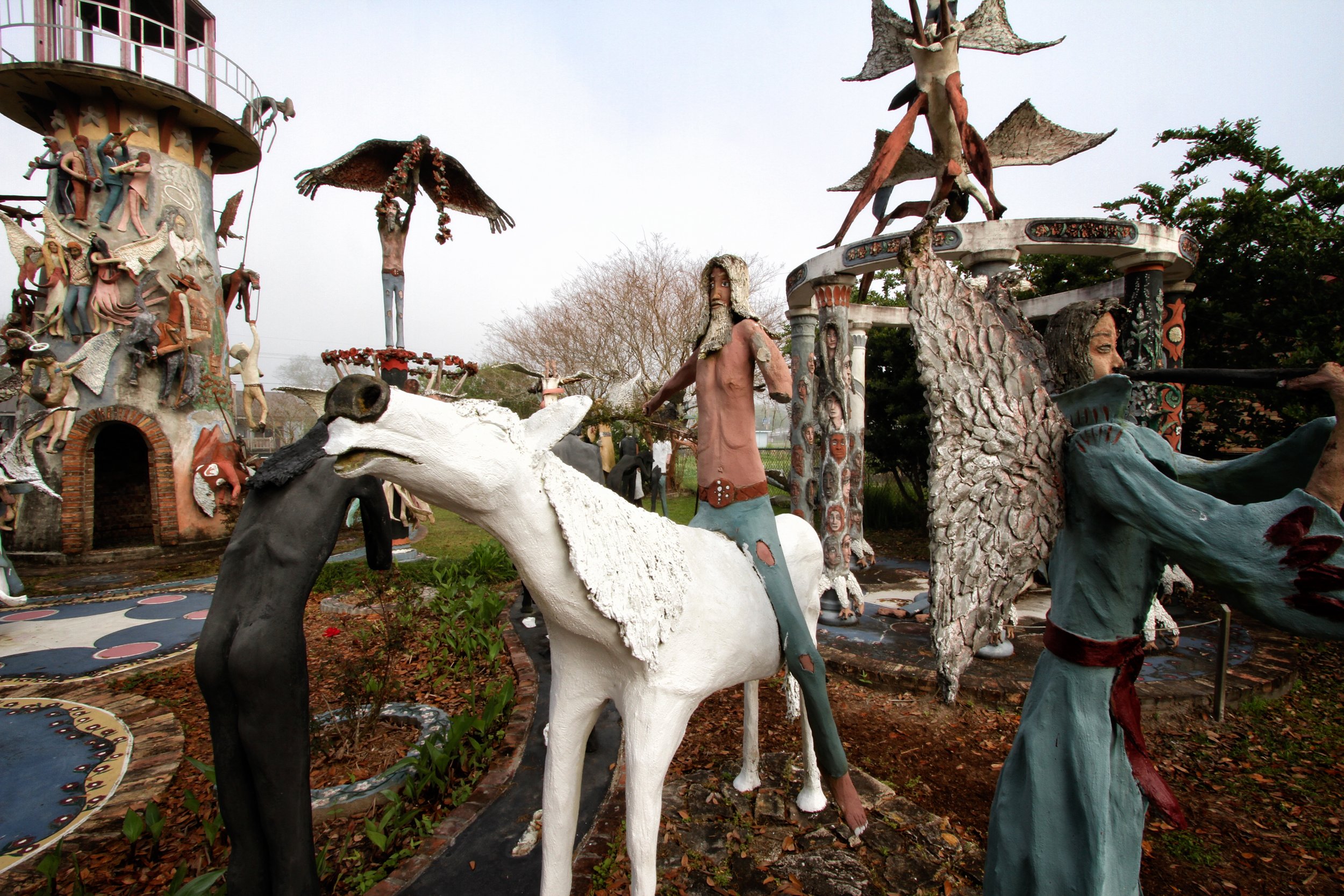
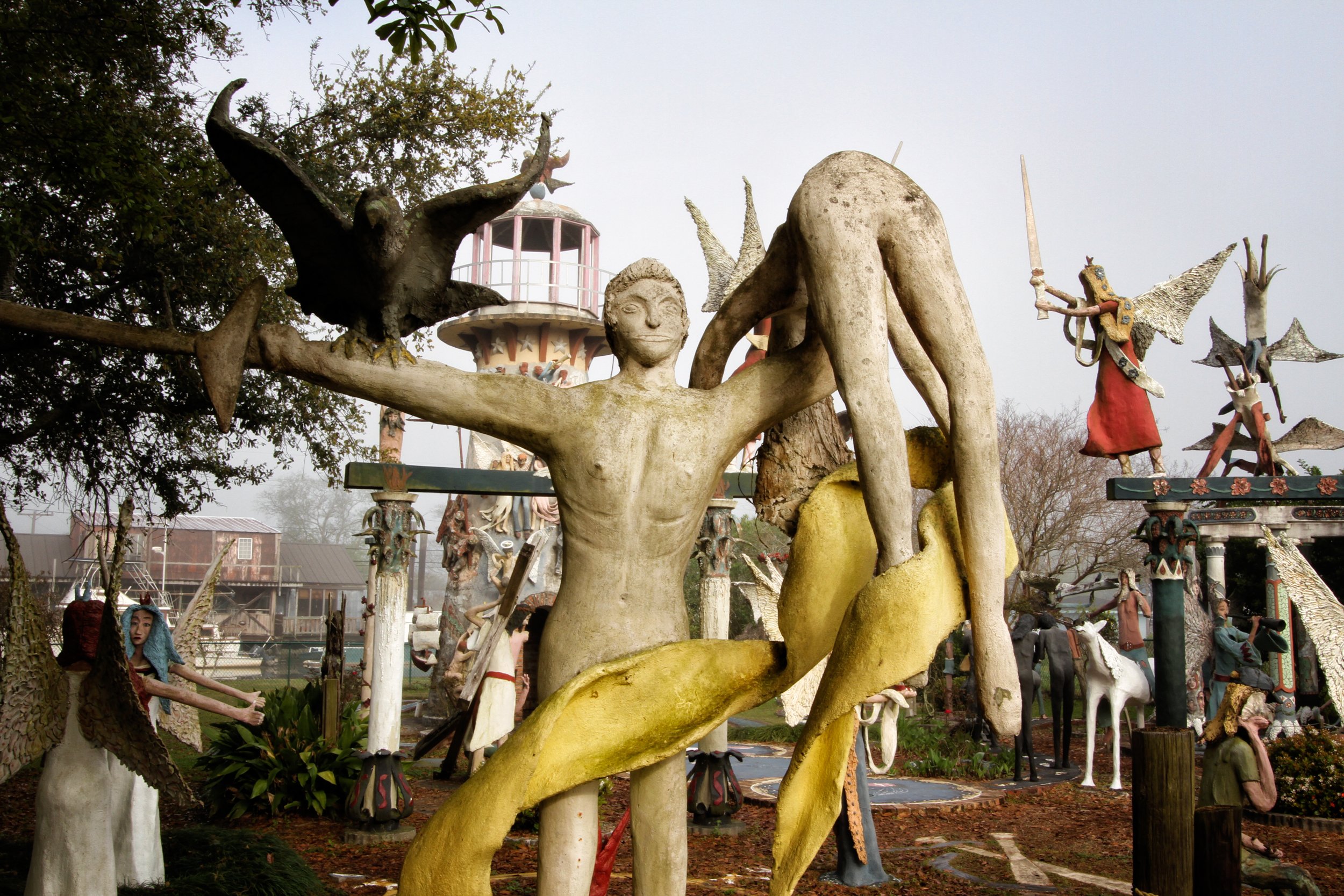

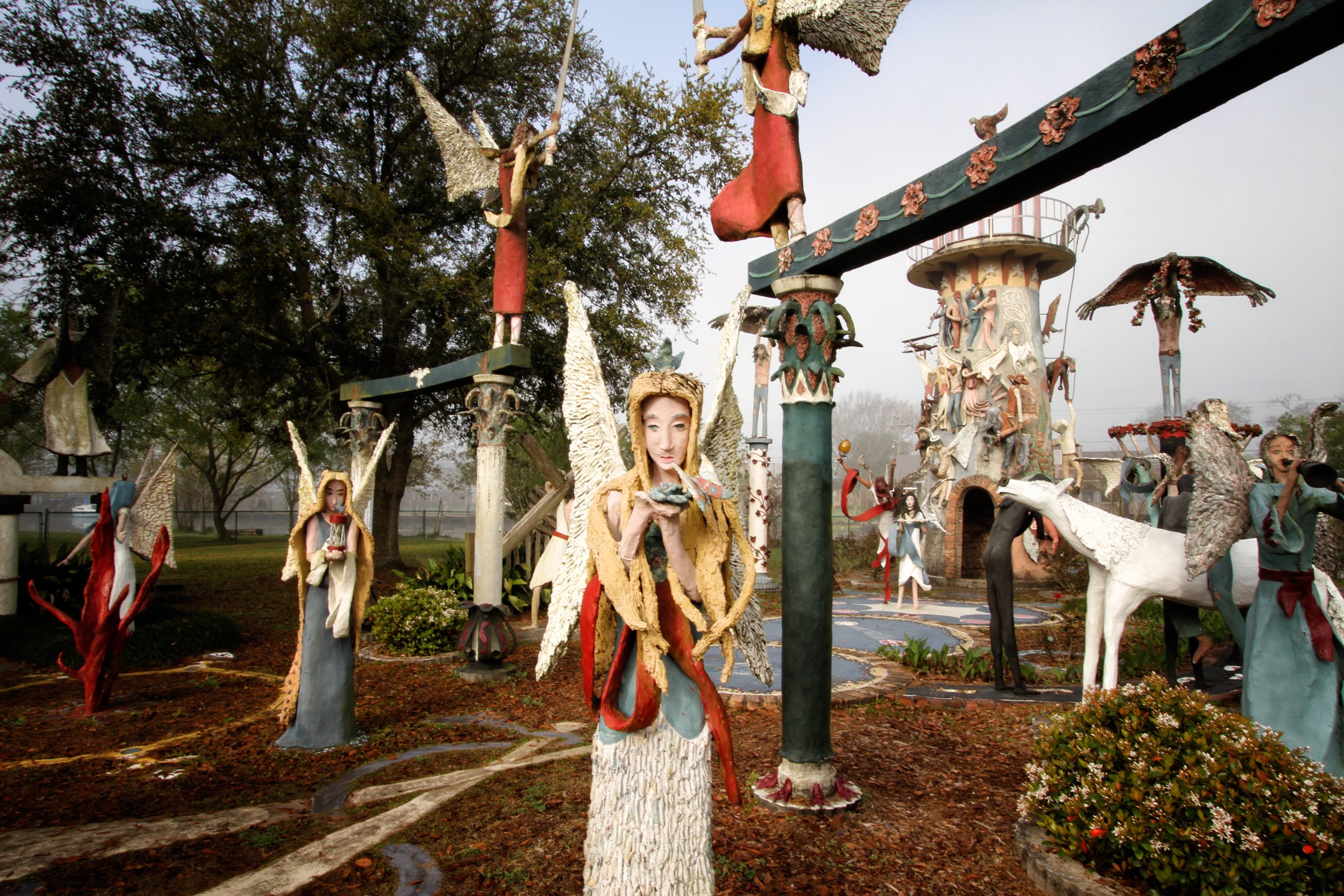
Kenny Hill is a bricklayer by trade. One day, for who knows what reason, he started working on a sculpture. It was a self-portrait, and he told a neighbor that if he liked it when it was done, he was going to make more. He must have liked it, because for the next twelve years, between bouts of earning a living, he toiled away on a small plot of land just off a bayou in Chauvin, Louisiana.
Working in concrete, he built life-size figures, telling his version of the story of salvation. There are angels holding horns, and angels with sand clocks, angels with swords, and angels playing harps, and then more angels after that. There's Christ on the cross, and the Gates of Heaven. There are lost souls, world-weary people, and there are self-portraits of Kenny, along the path at various stages. And, as you might expect, there are the Gates of Hell, as a reminder of the wrong path.
The one problem with all this is that Kenny Hill didn't own the land his sculptures were built on. And after a dispute with the landlord, reportedly over the mowing of grass, Kenny Hill walked away from his beloved art.
Now thanks to an art teacher named Dennis Siporski and the Kohler Foundation, Kenny's work (though not Kenny) looks like it's here to stay.
From NOLA.com:
https://www.nola.com/entertainment_life/arts/the-gloriously-strange-chauvin-sculpture-garden-is-a-transporting-covid-era-daytrip/article_f5143f78-56aa-11eb-a0c5-7be294cee927.html
The collection of sculptures is a folksy, spiritual reckoning, with lots of angels, lost souls and inscrutable, celestial symbols, plus some cowboys, U.S. Marines, American Indians, Elvis, a jazz band, an Alice in Wonderland-type little girl and Jesus. There are even two alluring women standing beneath a waterfall for good measure. Kenny Hill, the mysterious self-taught artist who built the place out of concrete, rebar and bricks, sculpted the way Dylan sings: rough, spontaneous, not especially intelligible, but abundantly real.
Artist Dennis Sipiorski, who’s helped preserve Hill’s masterpiece over the past 20 years, said the town of Chauvin is the sort of place where “you can do pretty much anything you want and no one will bother you.” So Hill built a shack on piece of rented land in the late 1980s, then built a 45-foot-tall lighthouse on the edge of the bayou, where the shrimp boats pass by. But he never put in a light.
Hill’s biography is vague, Sipiorski said. He was a brick layer, who traveled to worksites as far away as Branson, Missouri. He seems to have had an ex-wife and kids in Baton Rouge. He was a baby boomer, but there’s no evidence he was a Vietnam War veteran, as some thought. He wrote songs. His family may have been Pentecostal. He was mostly solitary. From about 1990-99, Hill created as much sculpture on his plot of land as any sculptor anywhere ever produced in the same amount of time, Sipiorski said. Then he just picked up and split.
Sipiorski got to speak to Hill during the sculptor’s last year in Chauvin. The artist said “he was told to build” the garden, but he didn’t say by whom, Sipiorski recalled. He declined to discuss the meaning of his artworks, Sipiorski said. Hill just said that “whatever people bring to the garden is what they take away.” Hill said he’d never considered selling his sculptures. “He said, ‘If I do anything for money, I lose my ability to create,” Sipiorski recalled.
Sipiorski pointed out that the blond, bearded, concrete statue that appears again and again in the garden is Hill’s self-portrait. In one iteration, Hill depicted his face as half-black and half-white. In another, he is on horseback. In another, he carries a cross. One inscription in the garden reads: “Enter In To My Heart.” One reads: “It is Emty.”
Sipiorski said that, after all these years, he still doesn’t know how to exactly interpret it all, but in his reading, “it’s about finding your way to salvation.” Maybe, he said, “his penance in life was to help you find your way.”
Why Hill abruptly stopped working on his garden is as enigmatic as everything else. Maybe it was something mystical. He might have bought into the fear that the millennium would bring about a catastrophe (remember Y2K?). His mother died, which may have prompted a change of life. Eventually, he was evicted by Terrebonne Parish for his failure to cut the grass.
Hill sat in a chair considering his situation for a day or two, then just walked off down the road, Sipiorski said.
Which left the garden in jeopardy.
Gary LaFleur loves Chauvin. It’s the kind of place, he said, where if two old guys are pumping gas at the filling station, they might strike up a conversation in Cajun French. You don’t see that much anymore. It’s a place where families have netted shrimp for generations. It’s a place where the road peters out into the Louisiana marshland that LaFleur holds dear.
LaFleur is a biology professor at Nicholls State University who studies “the way frogs and fish behave,” as he puts it. He drove past Hill’s sculpture garden all the time in the late 1990s, heading toward the school’s marine research station. The garden wasn’t well-known back then, but LaFleur was impressed.
“I said, ‘This could be a work of a genius kind of deal,'” he recalls.
LaFleur stopped one day and crept into the garden. He said he felt like he was trespassing, but he also felt like the sculptor, who glanced at him through the window of his tiny house, approved of his visit.
“I didn’t get a preachy atmosphere, more of a confessional atmosphere,” LaFleur said. “I thought, 'He’s been there. He’s had some struggles.' The first few times I saw it, I thought, somebody broke his heart.”
When Hill abandoned his creation, LaFleur feared the gloriously strange garden was doomed. Who would take care of it, after all? LaFleur contacted Sipiorski, who was the head of the Nicholls art department at the time, to brainstorm some way of protecting Hill’s creation.
Sipiorski, who was born in Wisconsin, had an idea. The Wisconsin-based Kohler plumbing fixture manufacturer has a foundation devoted to protecting art sites. Like a miracle, art lover Ruth Kohler arranged to buy the property and paid to build a visitor center, to the tune of $500,000. Then she gifted the garden to Nicholls, which has maintained it ever since, touching up the paint, fixing occasional damage and giving weekend guided tours.
LaFleur said that Hill eventually moved to where his brother lives in Arkansas or Missouri and produced a few more statues. He’s never contacted the management of the now well-known sculpture garden he created.
From Nicholls State University
http://www.nicholls.edu/folkartcenter/park.html
Little is known about the reclusive Kenny Hill, a bricklayer by trade, born around 1950. In 1988, he settled on some property on the bayou in Chauvin (pronounced show-van), Louisiana—population 3,400. Hill pitched a tent as his home and, over time, built a small rustic home that demonstrated an interesting use of space and attention to detail. Then, in 1990, without explanation, he began transforming his lush bayou environment into a fantastic chronicle of the world as seen through his eyes.
Less than a decade later, more than 100 primarily religious concrete sculptures densely pack the narrow, bayouside property. The sculptures are a profound mixture of Biblical reference, Cajun colors, and the evident pain and struggle of the artist’s life. Most are guided, supported, or lifted by seemingly weightless angels—black, white, male, female, baby, or soldier. The angels, each unique, some inviting passage, others prohibiting, vary from blue skinned, bare-footed, and sightless to regal angels clad in medieval garb with the black boots of the local shrimp fishermen.
The most prominent piece is a 45-foot-tall lighthouse, composed of 7,000 bricks, with figures clinging to the outside: cowboys, soldiers, angels, God and Hill himself. A walk through this sculpture environment is an emotional experience, evoking a sense of deep spirituality but also personal pain.
Hill placed himself in many of the scenes: he rides a horse; carries Christ’s cross; stands with long hair and a beard, his heart bleeding; and shows his face painted half black and white, suggesting the artist’s struggle between good and evil.
During the ten-plus years he lived on the property and created his art, he was adamant that the work was just for him—he felt no need to share it. Hill repeatedly denied requests for access to photograph or publicize his work but reportedly declared it a "story of salvation" for the local residents.
Neighbors have created a picture of Hill as a man who, by the time he abandoned his art in early January 2000, was deeply troubled and left not only his art and his home, but also abandoned the religion that had come to dominate his life. Evicted by the parish for not keeping the grass and weeds under control, Hill disappeared on foot, but not before knocking the head off of the sculpture of Jesus.
The site has been gifted to nearby Nicholls State University in Thibodaux, Louisiana. When former Art Department Chair, Professor Dennis Siporski, tried to prompt Hill to expound on the site’s meaning by asking, "Is this your vision?" Hill replied, "It’s about living and life and everything I’ve learned."
In 2002 the site was officially opened to the public with the dedication of the new Nicholls State University Art Studio, a gift of Kohler Foundation. For information or to arrange a tour of the site, call the Nicholls State University Art Studio at 985-594-2546 or the Nicholls State University Division of Art at 985-448-4597.
Creator: Kenny Hill: 1950-unknown
Creation date: 1990-2000
5337 Bayouside Drive
Chauvin, LA
985-594-2546
http://www.kohlerfoundation.org/chauvin.html
-
"Detour Art—Outsider, Folk Art, and Visionary Folk Art Environments Coast to Coast, Art and Photographs from the Collection of Kelly Ludwig" by Kelly Ludwig, Kansas City Star Books, 2007.
"Rare Visions & Roadside Revelations" (the book), by Randy Mason, Michael Murphy and Don Mayberger, Kansas City Star Publishing, 2002.
"Rare Visions and Roadside Revelations, "Southern Flavor", KCPT, Kansas City Public Television, 1999-2001.
"Rare Visions and Roadside Revelations Coast to Coast Travel-o-Pedia" by Randy Mason, et. al., Kansas City Star Books, 2009.